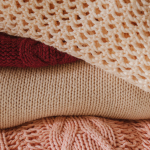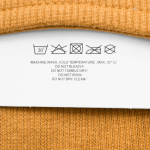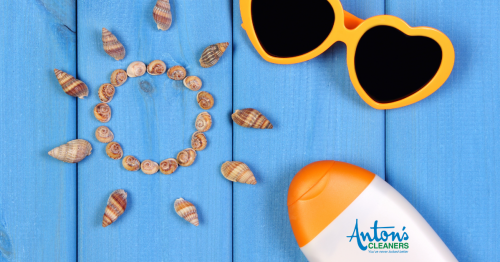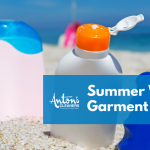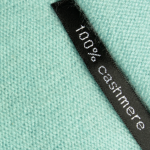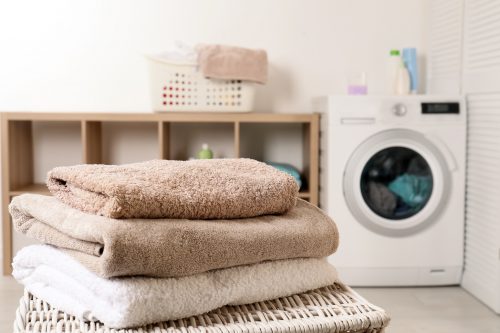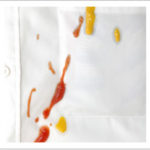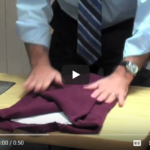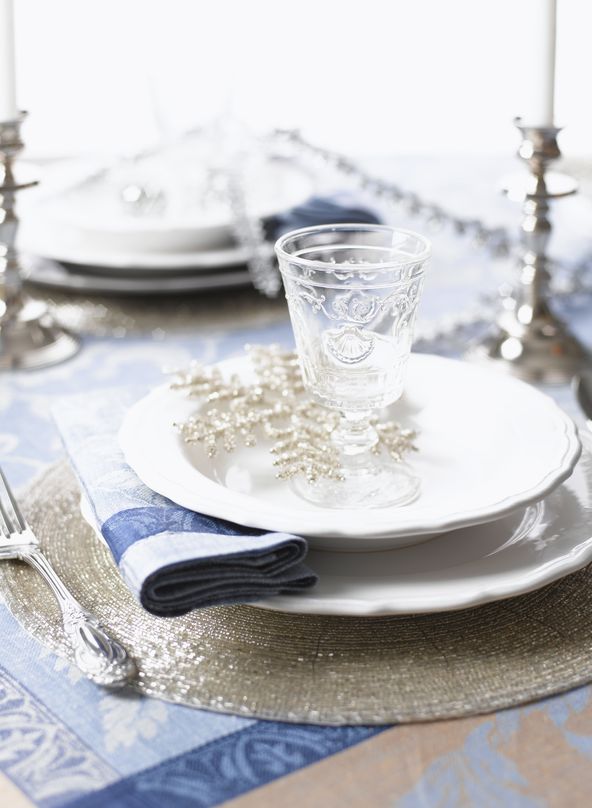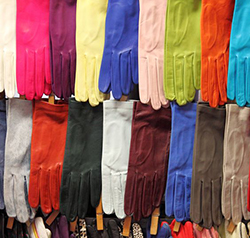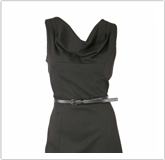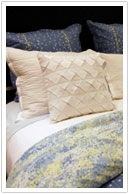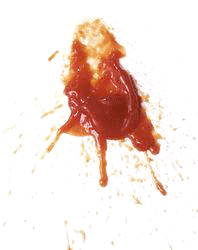General Tips
What do I need to know about the recent EPA ban on dry cleaners?
On December 9th, the Environmental Protection Agency (EPA) announced the ban of PERC (also known as PCE or perchloroethylene) and TCE (trichloroethylene), which are commonly used in many U.S. drycleaning plants today. As a customer of Anton’s Cleaners, you can feel confident that none of our locations utilize PERC or TCE, which are under scrutiny for serious health concerns. We have been proud to be PERC-free for over a decade. If Anton’s doesn’t use PERC or TCE, what cleaning process... View Article
Spring Wardrobe Refresh
Did you know that most people wear 20% of their garments 80% of the time? Think about it – certain clothes make you feel more confident than others. As Spring comes in full force, we are enjoying more time outside and reaching for a new season’s wardrobe. This time of year is infamous for the “spring clean.” Wiping up forgotten baseboards, washing windows, changing out linens, and adding a sense of “fresh” to your surroundings. Keep the momentum going and... View Article
Belle of the Ball is Back February 5th!
Dress donations are accepted through March 31; referrals are accepted through March 15th High school events are back and the search for the perfect prom dress is in full swing this February. As one of New England’s largest prom dress drives, Belle of the Ball ensures that any high school girl who needs a prom dress can have one. For young women and their families who are struggling to put food on the table, prom dress shopping can be stressful,... View Article
At Home Cleaning: Sweaters and Their Many Fibers
Sweaters come in many shapes, sizes, and fiber content. Each type of fiber can present different challenges when in the cleaning process. Here are some tips to help you successfully clean sweaters at home without causing damage. ACRYLIC Acrylic knit sweaters are often difficult to distinguish from wool or other fiber types. For this reason, paying attention to the care label and content is especially important. If the label suggests precautions, or if you notice “acrylic” is noted on the... View Article
Knowing the Difference: Cleaning Processes & Clothing Care
Various processes can be used to clean clothes. The basics are hand washing, machine washing, and dry cleaning. It is important to follow your clothing care label to prevent otherwise avoidable damage. Hand washing involves soaking the item in water and detergent to gently remove soils from the fabric. This method is very restrictive and has little or no agitation. Machine Washing garments are cleaned in a machine with water and detergent. This is the most widely known method for household laundry.... View Article
Don’t Let Stains Crash Your Party.
Does Club Soda really work? As we enter the holiday season, we’ll find ourselves at countless dinner parties, cocktail hours, and business meetings. Often surrounded by delectable food and drinks, this is also the time where accidental spills can cause lasting effects on our favorite garments (and table linens) if we don’t act fast! You’ve heard it before, maybe from your grandmother: “Dab the stain with club soda!” Is club soda really the ultimate stain remedy that it is cracked... View Article
The Never Ending Chore: Laundry
The kids are back in school and the laundry is piling up. It doesn’t matter how often you plan a “laundry day” because there always seem to be more clothes, sheets, and linens that need to be cared for. It all comes down to one truth: TIME = MONEY. And yes, your time is valuable. With fast fashions, Americans own more clothes than ever before – with an average of 500 pounds of dirty laundry per person*, per year! According... View Article
Getting Yourself and your Wardrobe Ready for Back To School
With only one month left to go, the upcoming school year is likely weighing on your mind. At least one shopping trip is probably at the top of your to-do list in the next few weeks. Whether you’re a teacher, parent, or college student, you’ll want to update your wardrobe with some of the latest well-fitting styles. Being confident and comfortable in your clothing choices allows both adults and children to focus on learning (or working!) rather than self-awareness. Properly... View Article
Summer Weather Garment Care
It’s officially summer – which means it’s time to lather up, jump in and enjoy the warm weather. This time of year is notorious for introducing many additional products to our daily routine that can damage clothing items. Here are some quick tips to minimize damage: Antiperspirant Potential Problem: Build-up from deodorant and antiperspirant products can cause fiber damage and yellowing. Blue and green silk and wool are particularly prone. Aluminum chloride can weaken fibers in cotton, linen, rayon, and... View Article
18th Annual Belle of the Ball
Each year, hundreds of girls in need are unable to attend their prom because of limited financial resources. Belle of the Ball was started in 2005 to ensure a high school rite of passage could be enjoyed by hundreds of students without the financial stress that often accompanies purchasing everything needed for prom. After a two-year hiatus, we are proud to say that the 18th annual Belle of the Ball Boutique Day took place on Saturday, Match 26th. Once again... View Article
Belle of the Ball is BACK
Although COVID-19 created a “new normal” for high school events, the search for the perfect prom dress is on and Belle of the Ball is back to ensure any girl who needs a prom dress can have one. For young women and their families who are struggling to put food on the table, prom dress shopping can be a crisis point and Caring Partners is here to help with the return of their annual “Belle of the Ball” and Boutique... View Article
Bedspreads and Comforters
You can typically expect comforters and bedspreads to last five and six years depending on use and care. A bedspread is an outer covering for a bed that goes over the sheets and blankets. It is usually a decorative component of the bed set. A comforter is a quilted bed cover that consists of an outer face fabric, a center batting (usually a fiber mat or down), and a backing fabric. These three layers are held together with a stitched... View Article
How To Care For Your Winter Coat
In New England, a good winter coat becomes an everyday staple of our wardrobe. It’s important to keep your coat looking its best by ensuring proper cleaning, storage, and care for it over time. Here are a few simple tips on how to properly care for your favorite coat: When cleaning your coat, follow the care label for the manufacturer’s instructions. Be sure to immediately treat any stains by blotting the stain (never rub the stain). The longer dirt or... View Article
Keeping Your Linens Looking Their Holiday Best
Do you want your table to look perfect this holiday season? Many linens are special, as they may have been gifted to you or an heirloom handed down from generation to generation. Unfortunately, even on holidays, accidents happen and you may encounter drink and food spills. Knowing how to properly care for your linens becomes especially important during the holidays. How to care for antique linens: Many families use heirloom linens during the holiday season. Although Anton’s may not... View Article
Caring For Bed Coverings
It is more important than ever to routinely clean bedding and household linens for a healthy, germ-free environment. Whether creating a master suite oasis, adding color to a kids’ room, or providing a relaxing place for guests to unwind – a comforter is often the central design feature in any bedroom décor. Our August coupon for comforters, bedspreads, blankets, and duvet covers is one of the most popular. Here are ten tips to keep your bedding beautiful (and germ free!):... View Article
Summer Weather Garment Care
With summer comes an environment that promotes perspiration and a set of seasonal products that can damage clothing. Here are some quick tips to minimize damage: Antiperspirant/Deodorant: Potential Problem: Build-up from deodorant and antiperspirant products can cause fiber damage and yellowing. It can also weaken fibers in cotton, linen, rayon, and some synthetic blends, leaving holes during cleaning. Clothing Care: Avoid overuse and allow antiperspirant/deodorant to dry before dressing. Soiled garments should be washed or dry cleaned as soon as... View Article
Help Us Help the Environment by Recycling
Are extra hangers cluttering your closet? Want to find a good home for them? Rather than allowing extra hangers to become a nuisance or sending them to a landfill, return them to Anton’s and we will take care of them for you. Hangers: The number of hangers in your closet can quickly exceed the number of garments you have to hang. Recycling not only frees up valuable closet space, by recycling you are helping protect the environment. Uncertain about where... View Article
Caring for Cashmere
A luxurious fiber, cashmere doesn’t need to be high maintenance if you wear and care for it properly. Here are five tips to consider when preserving these high-end sweaters. Make sure you know what you’re caring for. Due to a popularization of cashmere in the past few years, we have seen an influx of substandard product on the market. For this reason, you should purchase your sweaters from a reputable company and check the label to ensure it is 100%... View Article
Our most common questions, answered!
Does frequent drycleaning shorten the life of a garment? A. To the contrary, frequent cleaning extends the life of a garment. Not only do stains set with age, making the garment unwearable, but ground-in dirt and soil act as an abrasive, like sandpaper, causing rapid wear of fibers. If that isn’t enough of a reason to continue dry cleaning, insects are attracted to soiled clothes and will cause further damage if garments aren’t properly cared for. When a garment’s... View Article
Home Laundry: Tips & Tricks
One of the world’s biggest soap manufacturers, Procter & Gamble, says many people do their laundry incorrectly by not sorting loads, overloading machines, and washing clothes too often. Americans spend more time doing laundry than 50 years ago, but research shows the clothes are coming out less clean and more worn than elsewhere in the world. The Procter & Gamble study found the average American did laundry nine hours per week. This phenomenon is likely due to the singular wearing... View Article
Temperatures are already starting to drop and our neighbors need your help.
We’re collecting winter coats now through January 10th! Anton’s Cleaners is proud to, once again, partner with Jordan’s Furniture and Enterprise Bank for the annual Coats for Kids™ drive. Together we will help make the winter warmer for local children and families. Drop off new and gently used coats for children and adults at any Anton’s Cleaners location through January 10th. Additional program collection sites include all Enterprise Bank and Jordan’s Furniture locations. Coats for Kids is New England’s leading coat... View Article
How to Care for Your Suit
Suits are a wardrobe staple for both men and women. When it comes to buying a suit, you generally invest in something of good quality because you plan on wearing it for years to come. A well cared for suit can last for several years, looking as good as it did the day you bought it. Here are a few tips that can help extend the life of your suit: Make space in your wardrobe to allow your suit jackets to... View Article
Ten Tips for Buying and Caring for Bed Coverings
Our August coupon for comforters, bedspreads, blankets and duvet covers is one of the most popular. It is more important than ever to keep your bedding and househould linens clean. The CDC states that garments and bedding must be cleaned at a temperature “above 167° F” in order to kill a virus. Home washers and dryers cannot exceed 135 degrees. At Anton’s, we use high-temperature steam (upwards of 300 degrees) as a standard part of our finishing process – effectively... View Article
Understanding how to wear and care for your dress shirts
Dress shirts are a staple in most wardrobes. It is important to understand how to care for them and what fabrics are the right choice for your lifestyle: Natural fibers such as cotton and silk breathe well and are good choices for the warmer months. Although silk is higher maintenance than cotton. The higher the percentage of cotton, the better the shirt will breathe, so, if you perspire heavily, cotton is your best choice. There is no right or wrong... View Article
Anton’s is part of the solution.
Why is Anton’s Cleaners an essential business? Because the Center for Disease Control (CDC) states that garments and bedding must be cleaned at a temperature “above 167° F” in order to kill a virus. Home washers and dryers cannot exceed 135 degrees. At Anton’s, we use high-temperature steam (upwards of 300 degrees) as a standard part of our finishing process – effectively sterilizing without damaging your fabrics. The CDC confirms that the coronavirus can remain active and contagious for hours to... View Article
Spring Cleaning: Caring for Everyday Household Linens
As many of our customers adjust to life at home and start their annual spring cleaning, we find ourselves answering questions about how to properly care for household linens. As with garments, it is important to have your household items cleaned according to the care label and avoid over-stuffed washing machines. Anton’s Cleaners is committed to helping reduce the spread of disease in our community and safeguarding our customers by sterilizing your garments, bedding and other household items. Our cleaning process naturally... View Article
How to Store Your Winter Clothes
Spring is here, many of us can help but think of putting away our bulky winter coats, sweaters, and down comforters for the year. Now is a great time to begin storing winter items and free up space in your closets. Here are few simple guidelines to follow when storing your wardrobe: Wash or dry clean your clothes before storing them for the summer. Even if your clothes were worn once, human skin can leave residue in the material that... View Article
5 Tips to Removing Common BBQ Stains
Chances are that you’ve already broken out your entire summer wardrobe and you’re going to a cookout in the near future. We’ve all experienced the unhappiness of noticing a ketchup or mustard stain on that brand new polo shirt. Here are 5 Tips to remove common BBQ stains: Mustard – We list this one first because it’s one of the most challenging to remove. Make sure to carefully wipe off as much excess as possible. Soak the area with cold... View Article
Keep your clothes looking newer, longer.
To get the most wear out of your clothing purchases it is important to understand how to read a manufacturer’s care label. Here’s what to look for the next time you wash your favorite garments at home: Don’t just throw your clothes in the washing machine and hit the start button: Pay attention to what the manufacturer says is the recommended temperature setting. Many clothing items need to be washed with like colors, require permanent press, or a... View Article
How to Properly Preserve Your Tablecloth
This time of year, families start to take their holiday décor out of storage. Tablecloths in particular are something that we tend to spend a little extra money on, and want to keep looking perfect throughout the holiday season. It is important to properly preserve your tablecloth to keep it looking as though it is brand new each year. Here are 5 tips on how to care for your tablecloth: Don’t Let Stains Sit Too Long: You can often... View Article
How to Properly Care for your Coat
In New England a good winter coat becomes an everyday staple of our wardrobe. It’s important to keep your coat looking its best by ensuring proper cleaning, storage, and care for it over time. Here are a few simple tips on how to properly care for your favorite coat: When cleaning your coat, follow the care label for the manufacturer’s instructions. Be sure to immediately treat any stains by blotting the stain (never rub the stain). The longer dirt or... View Article
How to Help Keep Your Wedding Gown as Vibrant as the Day You Wore it
Many brides choose to host a Fall wedding in New England due to the changing of the leaves and comfortable climate. Despite everything associated with planning your wedding, it is important to take preliminary steps to ensure your gown is cared for properly both before and after the big day. Here are a few tips on how to keep your dress looking its best: Before the Wedding: If the bodice of the dress is stuffed with cardboard and tissue,... View Article
Keep You Sweaters Looking Their Best
Sweaters are a staple in New England. With the warm weather approaching, it is important that these garments are well cared for to ensure a long shelf life. Hanging sweaters can cause them to lose shape or stretch. We suggest folding your sweaters and storing them on a flat surface such as in a drawer or on a closet shelf. To avoid wrinkles or bulges, you’ll want to be sure to fold them properly. Watch the below video as Arthur Anton,... View Article
Keep Your Sweaters Looking Their Best
Sweaters are a staple in New England wardrobes. With the warm weather approaching, it is important that these garments are well cared for to ensure a long shelf life. Since hanging sweaters can cause them to lose shape or stretch, the best way to store sweaters is to fold and place on a flat surface, such as a drawer or closet shelf. To avoid wrinkles or bulges, you’ll want to be sure to fold them properly. Let me show you... View Article
How to Remove Salt Stains
Most people who choose to live in New England do so because they enjoy the changing seasons. Unfortunately, winter weather conditions can be harmful to our clothing. As snow starts to fall, we often use salt as a way to keep roads, sidewalks, and driveways from icing up. Salt is an abrasive substance, it is important to promptly care for your salt stained clothing. Salt can harm our clothing by fading color, leaving rings, and permanently staining clothing and footwear.... View Article
How to Store Your Winter Clothes
Spring is here, many of us can help but think of putting away our bulky winter coats, sweaters, and down comforters for the year. Now is a great time to begin storing winter items and free up space in your closets. Here are few simple guidelines to follow when storing your wardrobe: Wash or dry clean your clothes before storing them for the summer. Even if your clothes were worn once, human skin can leave residue in the material that... View Article
Keep Your Sweaters Looking their Best
New Englanders know colder weather is on the horizon. Sweater season will be in full effect and you want to make sure that these garments are well cared for to ensure a long shelf life. Since hanging sweaters can cause them to lose shape or stretch, the best way to store sweaters is to fold and place on a flat surface, such as a drawer or closet shelf. To avoid wrinkles or bulges, you’ll want to be sure to fold... View Article
Polo Shirt Care
We’ve had a small taste of beautiful weather and the first day of summer is upon us. Polo shirts will see plenty of use this time of year, as many people embrace this garment because of its versatility. You can look presentable for work AND relaxed enough for play. This garment does require some consideration when it comes to clothing care. Polo shirts are often primarily made of cotton and can be susceptible to fading and shrinkage after just a... View Article
Clothing Storage Advice
To keep important garments looking their best year in and year out, it’s important to consider proper clothing storage. Sometimes it’s hard to find the space in your home to store everything the right way. Try Anton’s Closet, our seasonal clothing storage program where we carefully box and preserve your garments in a temperature-controlled facility and press them when you’re ready to pick them up. You only pay for the cleaning. Here are 5 clothing storage tips that will help... View Article
Expert Stylist Quick Picks: December
Sports Coats, Blazers and Scarves are ideal layering pieces and serve unique roles in your wardrobes. This month Anton’s Stylist Mary Lou Andre shares tips for wearing all well. Anton’s Cleaners is offering a 25% off coupon for sportcoats/blazers and scarves the month of November. Print your coupon here. Or sign up as an Anton’s VIP customer to receive 50% off coupons to your email each month! To become a VIP member at no charge, sign up now.
How to Preserve Your Tablecloth
This time of year, families start to take their holiday décor out of storage. Tablecloths in particular are something that we tend to spend a little extra money on, and want to keep looking perfect throughout the holiday season. It is important to properly preserve your tablecloth to keep it looking as though it is brand new each year. Here are 5 tips on how to care for your tablecloth: Don’t Let Stains Sit Too Long: You can often remove... View Article
Expert Stylist Quick Picks: November
Having a cold-weather coat collection that complements your lifestyle is key to leaving the house feeling your personal best in cool weather. Likewise, having a collection of ties that compliment core suiting and dress shirts is key to adding signature style to a male professional and social wardrobe. This month Anton’s stylist Mary Lou Andre shares tips for wearing coats and ties well. Anton’s Cleaners is offering a 25% off coupon for coats and ties the month of November. Print... View Article
Expert Stylist Quick Picks: October
Sweaters are great for adding style and warmth to a cool-weather wardrobe. Professional and casual dresses get women dressed and out the door quickly on days with little time to figure out a whole ensemble. This month Anton’s Stylist Mary Lou Andre shares tips for wearing sweaters and fall dresses well. Anton’s Cleaners is offering a 25% off coupon for sweaters and dresses for the month of October. Print your coupon here. Or sign up as an Anton’s VIP customer... View Article
Expert Stylist Quick Picks: September
Suits are at the top of the professional dress food chain for good reason. They instantly set a business tone, are an easy choice when you have little time to figure out what to wear and they show and garner respect. For women, blouses allow you to “top off” your personal style in a myriad of ways. This month Anton’s Stylist Mary Lou Andre shares tips for wearing both well. Anton’s Cleaners is offering a 25% off coupon for suits... View Article
Expert Stylist Quick Picks: August
Polo Shirts indicate a more relaxed time of year when most of us can kick back both personally and professionally. This month Anton’s Stylist Mary Lou Andre shares tips for wearing them well. Anton’s Cleaners is offering a 25% off coupon for comforters and polo shirts for the month of August. Print your coupon here. Or sign up as an Anton’s VIP customer to receive 50% off coupons to your email each month! To become a VIP member at no... View Article
Expert Stylist Quick Picks: July
Dresses and shorts are the most popular “go-to” fashions when the temperature soars. This month Anton’s Stylist Mary Lou Andre shares tips for wearing both well. Anton’s Cleaners is offering a 25% off coupon for shorts and dresses for the month of July. Print your coupon here. Or sign up as an Anton’s VIP customer to receive 50% off coupons to your email each month! To become a VIP member at no charge, sign up now.
Expert Stylist Quick Tips: June
Polos and summer skirts indicate a more relaxed time of year when most of us can kick back both personally and professionally. This month Anton’s Stylist Mary Lou Andre shares tips for wearing both well. Anton’s Cleaners is offering a 25% off coupon for polo shirts and skirts for the month of June. Print your coupon here. Or sign up as an Anton’s VIP customer to receive 50% off coupons to your email each month! To become a VIP member... View Article
Expert Stylist Quick Picks: May
Sweaters and blouses allow you to “top off” your personal style in a myriad of ways. This month Anton’s Stylist Mary Lou Andre shares tips for wearing both well this time of year Anton’s Cleaners is offering a 25% off coupon for sweaters and blouses for the month of May. Print your coupon here. Or sign up as an Anton’s VIP customer to receive 50% off coupons to your email each month! To become a VIP member at no charge,... View Article
Expert Stylist Quick Tips: April
Sports Coats, Blazers, and Scarves are ideal layering pieces and serve unique roles in your wardrobes. This month Anton’s Stylist Mary Lou Andre shares tips for wearing all well.. Anton’s Cleaners is offering a 25% off coupon for sportcoats, blazers, and scarves for the month of April. Print your coupon here. Or sign up as an Anton’s VIP customer to receive 50% off coupons to your email each month! To become a VIP member at no charge, sign up now.
Expert Stylist Quick Tips: March
March often comes in like a lion and goes out like a lamb. It’s the month when winter coats start to get a break and are ready to be cleaned. Skirts that have been worn all winter with boots and tights can be spruced up with proper cleaning so that they transition into warmer weather with new vigor. This month Anton’s Stylist Mary Lou Andre shares five quick tips for transitioning coats and skirts from winter to spring. Anton’s Cleaners... View Article
Expert Stylist Quick Tips: February
Suits are at the top of the professional dress food chain for good reason. They instantly set a business tone, are an easy choice when you have little time to figure out what to wear and they show and garner respect. This month Anton’s Expert Stylist, Mary Lou Andre, shares four quick tips for wearing suiting well. Anton’s Cleaners is offering a 25% off coupon for suits and tablecloths the month of Febrauary. Print your coupon here. Or sign up... View Article
Expert Stylist Quick Tips: January
Sweaters are great for adding style and warmth to a winter wardrobe. This month Anton’s Expert Stylist, Mary Lou Andre, shares four quick tips for wearing sweaters well. Click through the images below to see all of this months tips! Anton’s Cleaners is offering a 25% off coupon for sweaters, sheets and pillowcases the month of January. Print your coupon here. Or sign up as an Anton’s VIP customer to receive 50% off coupons to your email each month! To... View Article
Ten Tips for Building a Functional Holiday Wardrobe
By Mary Lou Andre Think About Your Calendar: Before you shop, jot down the activities you’ll be doing during the holidays, including any specific parties you’ll be attending. Getting focused ahead of time about the types of clothes and accessories you will need to build a functional wardrobe to wear from now through New Year’s will keep you on track at the store. Determine Your Retail Sizing: Many people settle for less than a perfect fit. Taking the time to... View Article
Ten Strategies for Successfully Transitioning a New England Wardrobe for Cooler Weather
By Mary Lou Andre The rules for what is and isn’t acceptable to wear after Labor Day have changed over the years. No longer is it necessary to pack all of your whites, linens and patent leather shoes and accessories away the minute this “official” end-of-summer date hits the calendar. It’s also not uncommon to see sandals, bare legs and sleeveless looks being worn into October. So how do you mix and match what is currently in your wardrobe in... View Article
Top 10 Fashion Picks
Winter 2013/2014 1. Shades of Plum Pair black, gray and navy basics with plum for a fresh twist this season. 2.Pumps with a Point They elongate legs and add a fashion-forward look to skirts, dresses, trousers and jeans.
Five Tips for Cracking the Summer Dress Code
In the summer months, many companies allow employees to dress more casually. While many professionals welcome the opportunity to shed more formal business attire and be a bit more relaxed in their appearance, many are unsure of where to draw the line.
5 Practical Dressing Well Style Tips for Men
By Mary Lou Andre In celebration of Father’s Day this month, here are 5 practical style strategies to help the men in our midst up their style quotient: Be Prepared with a Suit. Even if you work in a business casual environment, there is still room in your wardrobe for at least one good dark neutral suit that fits you well at your current weight and makes you feel your personal best. Life happens – weddings, funerals, job interviews and... View Article
Your Visual Resume: 5 Interview Dress Mantras to Adopt Now
By Mary Lou Andre How you choose to dress each day shapes both your own mindset (how you feel about yourself) as well as the reaction of others to you. In a job interview, how you package yourself is extra important. You want to instantly be perceived as competent and confident. In honor of all the soon-to-be college grads in our midst, here a few of our best wardrobe tips to help land (and keep!) the jobs of their dreams.... View Article
Prom Style 2013
By Mary Lou Andre Anton’s award-winning Belle of the Ball prom dress donation drive is in full swing. Now through April 1st, go through your closets and donate dresses that are in good shape and in current style at any of Anton’s 41 locations. You’ll be helping deserving young women go to their proms in style while lightening up your closet for spring. For more information about Belle of the Ball and how you can help, click here. For those... View Article
Winter Clearance Wonderland: 5 Items to Stock Up on Now
By Mary Lou Andre An easy way to give yourself an end-of-winter wardrobe lift while cost-effectively building your wardrobe for seasons to come is to take advantage of end-of-winter clearance sales. Here are 5 winter wardrobe staples to look for now: Cashmere Sweaters & Scarves.Called the Cadillac of all wools, cashmere is more expensive than lambs wool and merino wool with good reason — it lasts longer when cared for properly, can be worn into spring better than heavier wools... View Article
Five Tips for Selecting and Wearing Winter Coats with Style
By Mary Lou Andre Now that the holidays have come and gone, coat departments, from moderately priced chains like JC Penney and the Gap to high-end stores like Barneys and Saks Fifth Avenue, have been transformed into a sea of sale signs. If you are in need of a winter coat to get you through the rest of the winter months, now is the time to act. Here are five tips to help you navigate winter coat racks this season:... View Article
Five Tips for Organizing Your Holiday Fashions
By Mary Lou Andre It’s November. Do you know where your holiday clothes are? With professional and social parties, reunions, philanthropic celebrations and special family gatherings in abundance from now through January, taking some time early this month to organize a winning holiday wardrobe makes good sense. Here are some easy to implement tips for storing and making the best use of all your special occasion clothes so they (and you!) will look great – one, two and maybe even... View Article
The Look of Leadership: 5 Professional Image Tips to Help you Succeed in Business (& in Life!)
By Mary Lou Andre Whether you are a business person, community leader or just someone who likes to show up in a way that makes others feel good, this month’s featured article “The Look of Leadership” is designed to make the case for why professional image standards matter. Here are 5 strategies we frequently use when coaching executives interested in using their image to enhance their leadership skills: Dress above industry standards. Overly casual dress codes are for amateurs. The... View Article
Ten Strategies for Successfully Transitioning a New England Wardrobe for Cooler Weather
By Mary Lou Andre The rules for what is and isn’t acceptable to wear after Labor Day have changed over the years. No longer is it necessary to pack all of your whites, linens, patent leather shoes and accessories away the minute this “official” end-of-summer date hits the calendar. It’s also not uncommon to see sandals, bare legs and sleeveless looks being worn into October. So how do you mix and match what is currently in your wardrobe in a... View Article
Summer Travel Style
By Mary Lou Andre With many New Englanders taking vacation time this month, here are seven fresh ideas for adding ease and style to your summer travel wardrobe: Create A Weekend Getaway Tub. If you travel a lot in the summertime, having a plastic tub filled with your favorite traveling outfits and toiletries is a great way to stay organized. If you travel locally, take the tub with you in the car. If you are traveling by plane or train,... View Article
Five Tips for Cracking the Summer Dress Code
In the summer months, many companies allow employees to dress more casually. While many professionals welcome the opportunity to shed more formal business attire and be a bit more relaxed in their appearance, many are unsure of where to draw the line. Here are five tips for cracking the summer dress code while maintaining a professional image that won’t cost you your reputation (or your paycheck!) this summer:
5 Practical Dressing Well Style Tips for Men
In celebration of Father’s Day this month, here are 5 practical style strategies to help the men in our midst up their style quotient:
Your Visual Resume: 5 Interview Dress Mantras to Adopt Now By Mary Lou Andre
How you choose to dress each day shapes both your own mindset (how you feel about yourself) as well as the reaction of others to you. In a job interview, how you package yourself is extra important. You want to instantly be perceived as competent and confident.
Top 10 Fashion Picks
Fall 2012 1. The Silk Blouse Brings a feminine touch back to fashion. 2. Black and Blue Royal blue stands out when paired with black. 3. Color Blocking A slimming effect on skirts and dresses, even coats and pants! 4. Animal Prints This perennial classic is always in style for work and play. 5. Gold Hardware On bags, shoes, belts, jackets – everything! 6. Bold Pants Bright colors and patterns on the bottom of your silhouette ground your look in... View Article
Clothing Storage Advice
To keep important garments looking their best year in and year out, it’s important to consider proper clothing storage. Sometimes it’s hard to find the space in your home to store everything the right way. Try Anton’s Closet, our seasonal clothing storage program where we carefully box and preserve your garments in a temperature-controlled facility and press them when you’re ready to pick them up. You only pay for the cleaning. Here are 5 clothing storage tips that will help... View Article
Eliminate “What to Wear” Stress with the Versatile Dress: 5 Tips
Dresses can be fun, flattering and a no-brainer on days when you don’t want to think about coordinating an outfit. They can be ultra-casual, such as a sundress or beach cover-up, or make the most formal of statements when heading down the aisle to say “I do.” Dresses can also work well as professional attire when they are coordinated to set a business tone. They offer a nice change from traditional business suits and separates, especially this time of year.
Three Important Tips to Preserve your Sport Coats & Blazers
Sport coats and blazers are important staples in anyone’s wardrobe. Dressing up a pair of jeans and a t-shirt with a nice sport coat is a very easy way to look casual, yet polished. In order to keep your sport coats and blazers in their best condition, consider these three suggestions: Daily Maintenance – Brushing and Airing Out Your Jackets Take 30 seconds out of your day and grab a clean brush with stiff bristles to clean your sports and... View Article
Prom Style 2012
Anton’s award-winning Belle of the Ball prom dress donation drive is in full swing. Now through April 1st, go through your closets and donate dresses that are in good shape and in current style at any of Anton’s 42 locations. You’ll be helping deserving young women go to their proms in style while lightening up your closet for spring.
How to Remove Chocolate Stains (for Valentine’s Day)
Who doesn’t love getting flowers and chocolate for Valentine’s Day, or any day for that matter? In addition to putting those flowers in water, make sure you don’t get any of that delicious chocolate on your special clothing and fabrics. Home stain removal can be tricky and its VERY important to check the fabric care label before doing anything. But if you are in a rush, or just had the garment cleaned and looking to remove the stain yourself, here... View Article
Winter Clearance Wonderland: 5 Items to Stock Up on Now
An easy way to give yourself an end-of-winter wardrobe lift while cost-effectively building your wardrobe for seasons to come is to take advantage of end-of-winter clearance sales. Here are 5 winter wardrobe staples to look for now:
Five Tips for Selecting and Wearing Winter Coats with Style
Now that the holidays have come and gone, coat departments, from moderately priced chains like JC Penney and the Gap to high-end stores like Barneys and Saks Fifth Avenue, have been transformed into a sea of sale signs. If you are in need of a winter coat to get you through the rest of the winter months, now is the time to act. Here are five tips to help you navigate winter coat racks this season:
Thirteen New Year Resolutions for Clothing Care
I will: Follow clothing care instructions and will not remove clothing care labels. Air out my clothes, remove all jewelry or pins, empty pockets and inspect for stains before putting them away. Keep hair spray, perfume and lotions away from coming in contact with my clothes, as they can cause stains. Immediately blot, not rub stains and treat them quickly and properly, so they don’t set permanently. Clean matching sets, such as suits and sweaters, at the same time to... View Article
Ten Tips for Building a Functional Holiday Wardrobe
Think About Your Calendar. Before you shop, jot down the activities you’ll be doing during the holidays, including any specific parties you’ll be attending. Getting focused ahead of time about the types of clothes and accessories you will need to build a functional wardrobe to wear from now through New Year’s will keep you on track at the store.…
Keep Your Holidays Stain Free
Keeping your clothes and linens looking their best this holiday season is not an easy task. Every party brings the opportunity for spills and it’s important to take care of the mess before it ruins your best sweater, tie or tablecloth. Here are 5 things you should know to help keep your holidays stain-free: Grease stains (i.e. butter, gravy, salad dressing, etc.) can be set by a hot water wash and drying – Often you can pretreat certain items with... View Article
Properly Preserving Your Tablecloth
With Thanksgiving and the Holiday season upon us, we all want our tablecloths to look perfect. It’s not always an easy task. You can’t just throw them into a washing machine and call it a day. Typically these tablecloths used for special occasions are not cheap and require special care to protecting them for long-lasting use. This includes properly prepping them for storage. Here are 5 tips to properly preserving your tablecloth: Don’t Let Stains Sit Too Long – Avoid... View Article
Five Tips for Organizing Your Holiday Fashions
It’s November. Do you know where your holiday clothes are? With professional and social parties, reunions, philanthropic celebrations and special family gatherings in abundance from now through January, taking some time early this month to organize a winning holiday wardrobe makes good sense.
5 Professional Image Tips to Help you Succeed in Business(& in Life!)
Whether you are a business person, community leader or just someone who likes to show up in a way that makes others feel good, this month’s featured article “The Look of Leadership” is designed to make the case for why professional image standards matter. Here are 5 strategies we frequently use when coaching executives interested in using their image to enhance their leadership skills:
Cooler Weather Wardrobe Tips
The rules for what is and isn’t acceptable to wear after Labor Day have changed over the years. No longer is it necessary to pack all of your whites, linens and patent leather shoes and accessories away the minute this “official” end-of-summer date hits the calendar. It’s also not uncommon to see sandals, bare legs and sleeveless looks being worn into October.
How to Keep Your Summer Whites, White
Store your white garments away from the light – During the manufacturing process, fabrics are bleached and treated with brighteners or fluorescent dyes to create the optical illusion of whiteness. Long exposures to light can break down these fluorescent dyes, causing areas to be discolored or stained. Unfortunately, this is an irreversible problem. Never let a stain set or oxidize – The last thing you want to do is let you white garment get very dirty and allow the stains... View Article
Summer Travel Style
With many New Englanders taking vacation time this month, here are 7 fresh ideas for adding ease and style to your summer travel wardrobe: #1 – Create A Weekend Getaway Tub. If you travel a lot in the summertime, having a plastic tub filled with your favorite traveling outfits and toiletries is a great way to stay organized. If you travel locally, take the tub with you in the car. If you are traveling by plane or train, pack your... View Article
What’s the Best Way to Clean Bedding?
Bed coverings are a focal point of your bedroom and will benefit from freshening after months of use. Many people only clean their comforters or bedspreads once a season. If you use a duvet cover, you may not have to clean your comforter but once every 2 – 3 years. But if simple shaking does not return your comforter to its original loft, bring it to Anton’s and have it professionally cleaned. Before cleaning, inspect the comforter or bedspread for... View Article
What is the best thing to do when ketchup spills on clothing?
Some things just seem to go together, such as summer and ketchup. But spills are inevitable. Most importantly, act quickly. Remove any excess ketchup with a spoon or knife, but be careful not to rub it into the fabric. Avoid dabbing at it as this can spread the stain. If the garment is washable, remove the garment as soon as possible and run cold water through the stain from the backside to force the stain out of the clothing. Then,... View Article
Your Visual Resume: 5 Interview Dress Mantras to Adopt Now
How you choose to dress each day shapes both your own mindset (how you feel about yourself) as well as the reaction of others to you. In a job interview, how you package yourself is extra important. You want to instantly be perceived as competent and confident. Here are a few of our best wardrobe tips to help land (and keep!) the job of your dreams:
Top 10 Fashion Picks
Spring/Summer 2011
1. A Versatile Dress.
Choose a sleeveless style that can be paired with jackets, cardigan sweaters and a variety of shawls and wraps. While still a great choice, think beyond the LBD (a.k.a. the little black dress). White, red and coral offer a fresh twist on this perennial classic.
The Fit that Flatters: Tips for a Perfect Fit
We all know that eating right and exercising regularly can improve our appearance, but did you know that clothing that pulls, buckles, or droops can add “pounds”? Follow these guidelines to determine when you should adjust a hem or taper a sleeve: The Jacket Shoulder seams fall ¼ to ½ inches outside the shoulder. Waist is smooth and subtle. Sleeve length is just below the wrist bone. Your blouse or shirt can show – a ¼ inch is ideal. Lapels... View Article
Other Questions
Other Questions “How often should your clothes be cleaned?” Unlike oil changes and food freshness, clothes don’t come with instructions about how frequently they should be cleaned. Some people have a regular rotation, whereas others rely on the wrinkle or sniff test. There’s no right answer. It varies with heat and activity during the garment’s use, how much someone perspires and whether the garment gets stained. The Dryclean & Laundry Institute offers helpful guidelines developed from a survey of consumers... View Article
Swimsuit Questions
Swimsuits “Is there any special care I should give to my swimsuits?” A. Yes. The major problem is residual chlorine left in swimsuits. It can cause damage to the fabric. Most of us hang swimsuits out to dry and then put them away. Because of the possibility of chlorine damage, swimsuits should be rinsed out before hanging them out to dry. Then, launder them before storing away during the winter. “Do you have any suggestions to help prevent my bathing... View Article
Sweaters Questions
Sweaters “What is the proper way to fold a sweater?” A. Since hanging sweaters can cause them to lose shape or stretch, the best way to store sweaters is to fold and place on a flat surface, such as a drawer or closet shelf. To avoid wrinkles or bulges, you’ll want to be sure to fold them properly. Watch our clothing care expert, Arthur Anton, Jr., demonstrate the right way to fold a sweater in our quick (49 sec.) video.... View Article
Suits, Sport Coats, and Blazers Questions
Suits, Sport Coats, and Blazers “It seems that suits have returned. My office is requiring that I wear a suit and since I tend to perspire a lot, I’m worried about the warmer weather. What do you suggest?” A. The pendulum of workplace fashion is swinging back to suits, blazers and dress shirts. Fortunately, men’s suit makers have introduced new materials to add comfort in the warmer months. We see poplin suits that have polyester fibers designed to move moisture... View Article
Skiwear Questions
Skiwear “Our family is taking up skiing. Do you have any suggestions to prolong the life of our skiwear?” A. Skiwear is an investment and most is made of high quality fabrics that will last if properly cared for. Constantly exposed to the elements, skiwear needs to be cleaned often to prevent permanent soiling. Pay close attention to the care label. Skiwear is complex with outer fabrics, inner linings, and protective coatings and it is critical that the care routine... View Article
Shirts Questions
Shirts “I love to golf and want to look sharp on the course. What do you suggest?” A. A great choice for golf attire is a smart casual polo shirt. Here are a few tips to help you get the most out of your golf shirts and keep them looking good at the end of the season. Think comfort and style. Choose a fabric that breathes easily, like cotton, and a fit that allows you to comfortably move through a... View Article
Pants and Shorts Questions
Pants and Shorts “Today, a good pair of denim jeans is a staple in most wardrobes. What’s the best method of care?” A. While the variety of brands, styles, shades and hues is enough to make one’s head spin, the costs can be equally as daunting. To keep your jeans in top form requires proper care, which may vary with your investment. Professional dry cleaning keeps jeans looking newer, fitting consistently and lasting longer and is a good choice for... View Article
Necktie Questions
Neckties “Can Anton’s clean neckties successfully? I have taken several to other cleaners and have been disappointed in the results.” A. Proper necktie cleaning takes special care. We give neckties extra attention, blocking them carefully, while making the edges look as soft as possible. Our customers seem pleased with the way we handle their neckties. It isn’t just stains that soil a tie. Every time you tie a knot, soil and oils from your fingers are left on the tie.... View Article
Knits Questions
Knits “What is the best way to keep knits looking good and maintain their shape?” A. Keep knits clean. Treat stains immediately. When spills are blotted immediately and professionally removed, stains are not as likely to develop. If a sweater or cape gets wet (and they do!), let it dry at room temperature away from the heat and then brush with the nap. Store knits on a closet shelf or in a drawer, when possible. Light and medium weight knits... View Article
Fabric Care Questions
Fabric Care “How can I tell the difference between real and imitation suede?” A. Natural suede is made by the abrasion of leather to produce a napped, velvet-like surface. Imitation suede is made one of two ways––synthetic fibers in a non-woven construction or with a flocked pile adhered to a woven or knit base. The flocked pile type is easily recognized by the base fabric. The non-woven is often difficult to distinguish from the real thing. If both sides look... View Article
Dresses Questions
Dresses I have a dress with a sequin trim that I want to have cleaned. What do I need to know about cleaning this type of dress? A. The first step is to read the clothing care label. Some labels say, “spot clean only.” Some sequins are sensitive to heat and may curl or distort during the cleaning process. However, the major problem is the possible loss of sequins if they are glued to the garment rather than sewn. If... View Article
Coats and Outerwear Questions
Coats and Outerwear “Can you offer some tips on how I can make my coats last longer and still look sharp?” A. A coat is something that people see you wearing every day. Here are some practical precautions to keep your winter coat looking its best: Wear scarves to avoid soiling the collar––particularly for leather and suede coats. Avoid hanging the coat by its “neck” on a coat rack. Use sturdy hangers (not wire) and allow “breathing” space in the... View Article
Blouses Questions
Blouses “A cotton blouse that I haven’t worn for a while has a mysterious tear. I don’t recall snagging it on anything. What could have happened to it?” A. Mysterious holes sometimes develop in cellulose fabrics such as cotton, linen, rayon, acetate and blends of these fabrics. The damage may appear as a circular hole, tear, or weak, thin area with no particular shape. There are two basic causes: one is the result of the fabric coming in contact with... View Article
Stretching your clothing care dollar Questions
“My job requires a professional wardrobe. When I purchase a suit, how can I be sure that it will last?” A. When you’re putting together your professional wardrobe, plan for the long term. “Investment pieces” or well-made timeless classics are designed to last and withstand the whims of fashion trends. Choose conservative, neutral colors such as black, gray or navy, and make sure each piece you add can be mixed and matched with pieces you already have. Good suits with... View Article
Clothing Care Labels Questions
“It seems every time I look at a care label, there’s a different symbol. How can I figure out what they mean? Also, if the label says ‘hand wash’ do I really have to hand wash the garment?” A. Care labels can be a pain in the neck, both literally and figuratively, but they have important information about the processing of your garments. Click here to see the care label chart that translates the symbols into plain English. By the... View Article
Holiday Clothing Questions
“I love dressing up for the holidays, but always seem to mess up the outfit while dressing. What can I do?” A. A few simple steps can help avoid stains and snags on holiday clothing. If you use make-up, hairspray, perfume, nail polish or cologne, remember that they contain such ingredients as alcohol, dyes, oils, etc. that can damage fabrics. To help avoid stains, put these on before getting dressed and let them dry for at least five minutes before... View Article
Wedding Gown Questions
“What is the best way to care for a wedding gown?” A. A wedding gown should be cleaned as soon as possible after use. As with other clothing, stains and soiling have the best chance of being removed completely when they are “fresh.” Special packaging is available that protects a fragile gown from atmospheric soils and contamination. Even though no process or storage method can guarantee against yellowing, mildew or fabric deterioration, Anton’s wedding dress care process, including acid-free packaging,... View Article
Travel Questions
“What is the best way to pack my suitcase to minimize wrinkling?” A.Whether you are planning a winter get away or traveling for business, you want your clothes to look their best. Here are six tips to help keep your clothes fresh: Don’t fold – roll. Gently rolling your clothes will not only take up less space, but also reduce wrinkles and creases. Select fabrics that won’t wrinkle easily such as silks, cotton knits and lightweight wools. Put the plastic... View Article
Stretching Your Clothing Care Dollar
Your clothing is an investment, so treating it well goes a long way in extending the life of your clothes. After each wearing: Empty pockets so that they do not sag or bulge Dry rain-soaked or damp garments thoroughly in a well-ventilated area before hanging in the closet Treat stains immediately to improve the likelihood of removal Avoid direct exposure to sunlight or artificial light that can cause fading. Don’t jam your clothes together in your closet Air clothing that... View Article
Stain and Spot Removal Questions
“How can I protect my clothes when I am out in the hot sun?” A. It’s important to protect your clothing from stains as well as perspiration and suntan lotion harm this summer. Perspiration shows up particularly in underarms, collar, back and waistbands of garments. It may not be noticeable at first, but oxidizes over time, becomes darker and stains clothing. Garments should be washed or dry cleaned regularly so the perspiration residue is removed when fresh, preventing permanent damage.... View Article
Shirt Laundering Questions
“What causes buttons to break in shirt laundering?” A. The two main reasons buttons break are time and construction of the button. Over time, buttons become brittle and break from normal wear and tear. But in many cases they are made of materials that do not handle the heat involved in home or professional laundering. Sometimes the crack is so fine, it is difficult to detect. This is one of the most common problems facing drycleaners and at Anton’s we... View Article
Seasonal Storage Tips Questions
What should I know about storing my clothes for the season? A. Be sure clothes are clean before putting them away. Invisible stains, such as coffee and soft drinks, can oxidize over time and appear as yellow. The longer the stain sets, the more difficult it is to remove. Insects such as moths, crickets and silverfish also love to feast on food, perfume, body oil and perspiration stains doing irreparable damage to the fabric. Store in a dry, well ventilated... View Article
Mold and Mildew Questions
How can I prevent mildew on clothes? A. Mildew commonly develops in the humid summer weather. Here are a few tips from our resident expert, Arthur Anton, Jr., on keeping your clothes free from mildew: Keep closets, dresser drawers, and storage areas as clean as possible. Keep fabrics dry. Do not put clothing or shoes that are damp (including wet from rain or perspiration) in the closet. Be sure clothing is clean before putting away in the closet. Even though... View Article
Household Items Questions
“My comforter is soiled and needs to be cleaned. The care instructions say the preferred method is wet cleaning. What does this mean?” A. Wet cleaning is a process used by the few professional drycleaners who have the state-of-the-art computer-controlled equipment that monitors water level, temperature, agitation and soap dispensing. It’s environmentally safe as water is the solvent. The controls can be programmed for many variables, including how fast the drum inside the washing machine rotates, the temperature and amount... View Article
Emergency Care for Spills Questions
5 Tips to Removing Common BBQ Stains A. Chances are that you’ve already broken out your entire summer wardrobe and you’re going to a cookout in the near future. We’ve all experienced the unhappiness of noticing a ketchup or mustard stain on that brand new polo shirt. Here are 5 Tips to remove common BBQ stains: Mustard – We list this one first because it’s one of the most challenging to remove. Make sure to carefully wipe off as much... View Article
Dry cleaning Questions
“How often should I dry clean my clothes?” A. Well-groomed, neatly cleaned and pressed clothing looks great and can make a stellar impression. With proper dry cleaning, your clothes will look better longer. How often you should dry clean really depends on how often you wear the garment and how well you take care of it between trips to the cleaners. Here are a few rules of thumb. If a garment is soiled or affected by perspiration or odor, it... View Article
Closet Sense
The cleanliness and organization of your closet play an important role in the life of your clothes. Here are 10 tips to be sure your closet is working for you: Clean your closet. Dust mites, including moth sacs, are in many closets. You can’t see them but moths like to lay eggs in wool, silk and fur garments that have not been disturbed for awhile. Don’t put wet or damp clothes or shoes in the closet, as this promotes mildew.... View Article
Closet Lighting
Direct exposure to sunlight or artificial lighting is dangerous to fabrics. Since many dyes are sensitive to prolonged exposure to light, colors can fade to lighter shades and even white clothing can fade to yellow. In some cases, light fading occurs on only one side of the fabric or where an edge is exposed to a light source. On some fabrics, such as silk, fading can occur in a relatively short time. While clothes should be removed from the poly... View Article
Holiday Clothing
New Year's Clothing Care Resolutions I will:
- Follow clothing care instructions and will not remove clothing care labels.
- Air out my clothes, remove all jewelry or pins, empty pockets and inspect for stains before putting them away.
- Keep hair spray, perfume and lotions away from coming in contact with my clothes, as they can cause stains.
- Immediately blot, not rub stains and treat them quickly and properly, so they don't set permanently.
- Clean matching sets, such as suits and sweaters, at the same time to maintain color consistency.
- Repair small problems, such as a loose seam opening, right away.
- Avoid crowding clothes in my closet, so they do not wrinkle unnecessarily.
- Use good quality hangers to support my clothes and keep them in shape.
- Fold knits and place in a drawer or on a shelf.
- Remove my clothes from the plastic bags from the drycleaner as they can trap moisture and cause damage.
- Clean my seasonal clothing before storing, so the insects won't have a feast.
- Store my seasonal clothes in an area with proper air ventilation, moisture control and light exposure.
- Recycle wire hangers and plastic bags at Anton's recycling center.
Video Tips
How to Properly Fold a Sweater
Learn how to properly fold a sweater with Arthur Anton, Jr.Clothing Labels
Learn what clothing care labels mean with Arthur Anton, Jr.How to Pack a Suitcase
Learn how to pack a suitcase with Arthur Anton, Jr.Travel Questions
- “How often should I dry clean my clothes?”
-
A. Well-groomed, neatly cleaned and pressed clothing looks great and can make a stellar impression. With proper dry cleaning, your clothes will look better longer. How often you should dry clean really depends on how often you wear the garment and how well you take care of it between trips to the cleaners.
Here are a few rules of thumb. If a garment is soiled or affected by perspiration or odor, it should be dry cleaned as soon as possible. Light color garments and frequently worn clothes are especially susceptible to dirt and require more frequent cleaning. Have all matching pieces such as suits cleaned at the same time. This prevents any inconsistencies resulting from color changes. Always clean your garments before storing away for a season.
It’s also a good idea to give your clothes a “rest.” Do not wear the same suit or sport coat two days it a row. By allowing time between wearings, fabric fibers can regain their resiliency. Use proper hangers and don’t jam your closets – provide enough room for your clothes to avoid wrinkling and benefit from the circulation of air.
- How can I prolong the life of my white garments?
-
A. Proper care and storage help prolong the life of white garments. Here are some pointers:
- Don’t wear a white garment more than once between cleanings or washings. Soil, body oils, perspiration, liquids and sugars can become “hidden stains” that are more difficult to remove over time.
- Store your clothing in breathable bags. Remove the garments from the dry cleaning plastic covers. These plastic bags inhibit the fabric from breathing and can promote the formation of mildew and cause fume fading that will yellow whites.
- If you own matching sets of white clothing such as suits, sweater sets or dresses with matching jackets, always have them cleaned at the same time, whether or not they appear to be soiled. Dyes and fabric finishes will change over time and with repeated wearing. To keep your matching sets looking as new as possible, clean them together.
- Follow clothing care instructions. Proper care will help the garment last longer.
- “Does frequent cleaning shorten the life of a garment?”
-
A. To the contrary, frequent cleaning actually prolongs the life of a garment. Not only do stains set with age, making a piece of clothing unwearable, but ground in dirt and soil act as an abrasive––just like sandpaper––causing rapid wear of fibers. Also, insects are attracted to soil and can cause further damage.
The Department of Clothing and Textiles at the University of North Carolina at Greensboro conducted research in cooperation with the School of Textiles at North Carolina State University at Raleigh. They used the Kawabata Evaluation System, which was developed in Japan. The research showed that the various dry cleaning processes have no negative effect on the properties of wool in men’s suiting fabrics.
- “ Can we recycle our hangers?”
-
A. Definitely. Anton’s both reuses and recycles hangers. We make it easier for customers to recycle hangers with a hanger caddy. This handy storage container lets customers stack hangers neatly, making recycling easier than ever. Just ask your customer service person for the free caddies.
By the way, over 3.5 billion hangers end up in land fills every year. Recycling is the responsible thing to do and we encourage all our customers to return their hangers to Anton’s.
- “Does dry cleaning shrink clothes?”
-
A. Usually not. Professional cleaners carefully control the dry cleaning process.
- “I like the idea of same day service, but does it really get the job done?”
-
A. Same day service is fine for most clothes without stains. As long as they are brought by the time specified by the cleaner, the clothes can be cleaned, dried and pressed and ready for pick up by the end of the day. Some clothing items do need special attention and require more time. When in doubt, point out the item and ask your drycleaner.
- “Why do some cleaners charge less for a man’s dress shirt than they do for a woman’s blouse?”
-
A. About 20 years ago a controversy erupted over gender-based pricing in the dry cleaning industry and the International Fabricare Institute stated that similar garments should cost the same amount to clean, regardless of who’ll be wearing them. Men’s shirts are often constructed in the same simple way – so they can be laundered and pressed on automated equipment. Women’s shirts that are similarly constructed and can be laundered should be priced the same as men’s laundered shirt. If any men’s or women’s shirt needs to be dry cleaned because of fabric, ruffles or ornamentation, it will cost more than a laundered shirt, but the dry cleaning price should be the same regardless of gender.
- “I don’t like the chemical smell that sometimes is in my clothes when I get them back from the drycleaner. What is this and is it harmful?”
-
A. Dry cleaning uses a chemical solvent (instead of water) that removes dirt and stains without shrinking or damaging fabrics. Some cleaners may “filter” chemicals or use the same chemicals repeatedly. At Anton’s, we recycle chemicals using a sophisticated distillation process. We are one of a few cleaners to use totally clean solvent with each load of clothes. We also randomly test cleaned garments with a halogenated detector to ensure there’s no measurable residue when you pick up your order.
- “Are all cleaners about the same? Frankly, I tend to go to a store that’s close to where I live or work.”
-
A. Convenience is certainly a major consideration in selecting a dry cleaner. That’s why there are so many stores in a community. Frankly, all cleaners are not the same. Some are more experienced than others. Some are very particular about having the latest cleaning equipment, while some are less committed to the best possible processing of clothing. Also, there are cleaners that are “production-driven.” Their primary interest is in getting the most garments done as fast as possible. While many cleaners operate their own cleaning plants, many others have a third party do their work. If in doubt, ask questions. You want your clothes to get the best possible care.
- “Last fall I put away a suit in a cedar chest I had worn just once after having it cleaned. Yet, when I took it out this spring to have it cleaned, it came back with holes all over it. My drycleaner told me these were moth holes. Can this be right?”
-
A. You’re not alone. It’s a common occurrence. Wearing a garment once is all it takes. In just one wearing, perspiration, body oils or small food stains can be left in the fabric. And that’s all it takes for moths to feast on a garment. The rule is simple: clean clothing before storing.
- “I notice that Anton’s offers storage service. If clothes are cleaned before they are stored until I need them late in the fall, won’t they need to be cleaned again?”
-
A. As we indicated in the previous question, the rule is to clean clothing before storing. Along with a potential moth problem, there are also stain issues. For example, if you’ve put away a light colored sweater for months without having it cleaned, you may have been surprised to see a spot appear. It was invisible when you put it in the drawer or storage box. But months later, there it was.
We clean all clothing that is stored at Anton’s. The garments are hung on hangers and placed in our dust-free, temperature-controlled vaults. Although the ideal environmental conditions in our vaults make re-cleaning unnecessary, we press them so they are fresh and perfect when you call to let us know you are ready to pick them up.
- “Why do white ‘dry clean-only’ become dingy looking after dry cleaning?”
-
A. Although this is a common problem, it is not necessary. Dirty solvent generally causes it. You want to be sure you go to a drycleaner who uses fresh, clear solvent at all times. There is no excuse for less than bright whites.
- “What is wet cleaning?”
-
A. Dry cleaners have a number of processes for cleaning clothes including dry cleaning, laundering and wet cleaning. Dry cleaning uses solvent to remove soils and stains from the fabric in specially designed machines. Dry cleaning gets its name because the solvent contains little or no water and does not penetrate the fibers as does water.
Professional cleaners use laundering for shirts and other “washable” items. Special detergents, additives, and finishes, not available for the home, are used. Anton’s, for example, is one of a very few area drycleaners licensed for Sanitone products that are formulated to give laundered clothing a “bright” look.
As far as wet cleaning is concerned, the American Association of Textile Chemists and Colorists defines professional wet cleaning as “a process for cleaning sensitive textiles (e.g., wool, silk, rayon, linen) in water by professionals using special technology, detergents, and additives to minimize the potential for adverse affects. It is followed by appropriate drying and restorative finishing procedures.” Professional wet cleaning should not be confused with laundering, although it is. In general, one of the downsides to wet cleaning is that it can cause significant changes in texture and garment size, including shrinkage and stretching, meaning many garments require longer finishing time.
The wide array of textiles available today requires both training and experience to clean them properly.
- “What can I do to help prevent moth damage to my clothing?”
-
A. The best way to prevent moth damage is to have clothes cleaned before storing them away. This will remove the stains that may attract moths, as well as kill any remaining larvae. Also, cedar chips or mothballs can be placed in the storage to help repel moths.
- “Why are my clothes not as clean as they should be after washing?”
-
A. Since most of us have so little time, we try to get everything done as quickly as possible––including the laundry. Although today’s detergents are highly efficient, certain stains require pre-treatment or soaking in cold water before washing. All this takes extra time.
You can try adding a limited amount of extra detergent, reducing the size of the load and using a longer wash cycle. You may also want to use a chlorine or “all fabric” bleach. If you do, be sure to test the fabric for colorfastness first.
- 5 Tips to Removing Common BBQ Stains
- A. Chances are that you’ve already broken out your entire summer wardrobe and you’re going to a cookout in the near future. We’ve all experienced the unhappiness of noticing a ketchup or mustard stain on that brand new polo shirt. Here are 5 Tips to remove common BBQ stains:
Mustard – We list this one first because it’s one of the most challenging to remove. Make sure to carefully wipe off as much excess as possible. Soak the area with cold water immediately. You can pre-treat with a stain remover, but double check the clothing care tag. Wash the pre-treated garment in warm water as soon as you get home.
Watermelon – We go from the hardest to easiest to remove. Luckily watermelon is made mostly of water and you can usually remove this stain by immediately dabbing it with a wet towel. Absorbing the pink watermelon juice with a paper towel before you finish with a damp towel is often an effective way to get the stain completely out.
Ketchup & BBQ Sauce – Put a paper towel or napkin over the stain and from inside the garment, flush the stain with some cold water to get most of it on the napkin or paper towel. Depending on the fabric of your garment, consider pre-treating the stain with some liquid laundry detergent and let it sit for a few minutes. This will help break up the stain. Rinse well with more cold water and then put it in the wash.
Iced Tea – Luckily for you and your garment, an iced tea stain doesn’t get into the fabric as quickly as hot tea does. Take a clean ice cube and rub it on the stain. Pat the area with a dry paper towel or napkin.
Buttered Corn – You will need to address that oil stain as soon as possible. Put some sugar on the stain and pat it with a napkin or paper towel to help absorb some of the grease. Let it sit and then brush off the sugar. If the garment is machine washable, pre-treat the stain with a liquid stain remover or detergent. After checking the clothing care label, wash in the hottest water possible.
- “Can you remind me what I should do if I spill a drink at a party so I don’t ruin my clothes?”
- A. It happens to all of us. Never rub a stain. Blot gently with a dry cloth to absorb the spill. Do not apply water or liquid. If the stain is oily this will set it and if it is water-based, you may spread it. The sooner you have your garment cleaned, the more likely the stain can be removed. Be sure to tell your drycleaner the source of the stain.
- “I recently spilled a glass of red wine on my silk blouse. My host gave me club soda, which I generously applied; however, the stain spread and created a “ring.” What should I have done?”
- A. There are all sorts of home remedies that claim to remove red wine including white wine to remove red, club soda or even salt to remove the stain. Your host was well intended in giving you the club soda; however, it is generally not a good idea when the fabric is dry clean only or if the stain is oil based because it can spread the stain and bleed the dye on the garment.
When a red wine spill occurs, take quick action and gently blot (do not rub!) the stain by placing a clean white cloth on both sides of the garment and pressing until all liquid is absorbed. If the garment is “dry-clean” only, have the garment cleaned within 24-48 hours. Since time can “set” stains, the sooner it is treated the better.
For washable clothing gently blotting the stain, followed quickly by a proper treatment with a home stain removal product can help. Much depends on the type of fabric and the stability of the dye. Testing in a small invisible area is recommended.
It takes months to train a spotter to remove stains from fragile fabrics. If the garment is important to you and you want to be sure the stain is removed, it is best left for a skilled drycleaner.
- “My comforter is soiled and needs to be cleaned. The care instructions say the preferred method is wet cleaning. What does this mean?”
-
A. Wet cleaning is a process used by the few professional drycleaners who have the state-of-the-art computer-controlled equipment that monitors water level, temperature, agitation and soap dispensing. It’s environmentally safe as water is the solvent. The controls can be programmed for many variables, including how fast the drum inside the washing machine rotates, the temperature and amount of water used, the amount of detergent added to the wash cycle and the air temperature and length of the drying cycle. This makes it a versatile process for many types of fabrics.
- “I understand dust mites can occur even in clean homes. What can I do?”
-
A. House dust allergies are common even in clean homes. The bacteria by-products in dust mites are called endotoxins and adults living in homes with high endotoxin levels are more likely to have asthma and related health issues. Here are a few dust mite-busting tips from The American College of Allergy, Asthma & Immunology to help you keep your family healthier:
- Wash all bedding (including pillows without the cases) in hot water every week to 10 days. (Or let us wash them for you, it would be our pleasure!)
- Regular dry cleaning of comforters and blankets will also eliminate the endotoxins found in dust mites.
- Clean sheets and pillowcases in the same temperatures normally used by commercial cleaners and launderers (very hot — over 130°F) — and dry them in a hot dryer, or have your bedding commercially laundered and pressed. Dust mites cannot live in environments over 130°F.
- Don’t dry sheets outside, since that brings more allergens inside.
- Cover mattresses, box springs, and pillows with allergen-proof casings, which can be purchased at any linen store.
- Think twice before running a humidifier, since humidity encourages the reproduction of dust mites. If you must use one, clean it regularly to prevent mold growth.
- “I had my down comforter cleaned and it is lumpy. It also began to come apart. What can I do to prevent such damage?”
-
A. Although cleaning down items is usually not a problem, a comforter with poor construction and insufficient quilting can cause the down to shift, lose shape, or become matted. It’s a good idea to look for these things before purchasing a comforter. It is also important to check the strength of the stitching. Weak stitching can allow the down to shift and the comforter to come apart.
- “My mother just gave me a handmade quilt that my great-grandmother had made. Is it safe to have it dry cleaned?”
-
A. Handmade quilts need to be treated with great care. If the fabrics were not prewashed before the quilt was made, all colors should be checked for colorfastness. Gently rub a wet cloth over a small area in each section of the quilt. You will see if any of color comes off. Since quilts are made up of many pieces of cloth, it is necessary to test all sections. Some dyes will run in water and mild detergent, while others will run in dry cleaning solvents. If you decide washing is safe for all colors and fabrics in the quilt, fill a tub with water and mild detergent. Gently work the detergent and water into the quilt. Drain the water and fill with fresh water rinsing thoroughly until the water is clear.
If there is any question about the condition of the fabric and its ability to be cleaned, don’t take a chance. Hang the quilt out to air dry instead.
- “I’m getting ready to have our bedspreads cleaned. Is there anything special I need to know before I take them to the cleaner?”
-
A. The answer is “Yes.” Consumers are sometimes surprised when they get a bedspread back from the cleaner to find that the colors have faded and don’t match the companion pieces. Sometimes there’s an overall lightening or a complete change of color. There can also be streaks or a frosted appearance. This occurs because the fabrics are not “colorfast” to dry cleaning solvent. Before doing anything, read the care label. If you have colorfast concerns, ask your drycleaner to test the fabric before proceeding. This is the standard practice at Anton’s Cleaners.
- “What’s the best way to clean an electric blanket?”
-
A. As you might expect, we recommend that you read the manufacturer’s care instructions carefully before doing anything. There may also be a permanent label attached to the blanket.
Unless otherwise indicated, electric blankets should be machine washed on a gentle cycle and line dried. Do not put your electric blanket in the dryer. When hung to dry, electric blankets will not require ironing.
Dry cleaning is not an option. Electric blankets are made with electrical wires that are covered with plastic casing that may be solvent-soluble and expose the wires. This can cause a short circuit or even a fire.
- What do you recommend about pillows, blankets, duvets, and comforters?
-
A. As with clothing, read and follow the care instructions carefully. If labels are on the packaging or are removed because they are scratchy, it is best to keep them in your linen closet or laundry area, so you can find them when needed. Although a drycleaner’s past experience and knowledge of fibers, fabrics and dyes can guide the best and safest method of dry cleaning, saving the labels is the best damage prevention method.
Pillows
If your pillows are synthetic filled, you can wash and dry them. The thickness and density of pillows means that you will need extra rinse and dry cycles. If you have natural filled pillows, like down or feathers, they should be sent to the drycleaner where the ticking is removed and the feathers sanitized.
Pillows are best protected from dust and dirt with a pillow protector and pillowcase. When proper care is taken, I recommend cleaning pillows at least once a year. Freshening up your pillows by airing them out on a dry, sunny day is also a good idea.
Blankets
Blankets should be cleaned before storing away for the spring. Soiled blankets placed in storage attract insects and stains can set and weaken fabrics.
Cotton and synthetic blankets generally can be washed and dried. A fabric softener may be used to help reduce static cling and keep the blanket soft.
For wool blankets, I recommend dry cleaning. If washed, wool blankets can experience shrinkage and lose their shape and softness. Sometimes customers will bring in a blanket that has shrunk and ask us to “stretch” it. Unfortunately, if the shrinkage that occurs is severe it is not reversible. Dry cleaning best maintains blanket size, shape, feel and appearance.
Comforters/ Bedspreads/Duvet covers
While this is a personal decision, most people clean their comforters or bedspreads once a season, or more depending upon use. If you use a duvet cover, you may not have to clean your comforter but once every 2 – 3 years. If simple shaking does not return your comforter to its original loft, it should be cleaned.
Some problems that can occur when cleaning comforters or bedspreads are shrinkage, color loss, dullness, and tears. You can avoid some of these issues at the time of purchase by checking to be sure that the bedspread has been preshrunk and that down or fiber-filled bedspreads are well quilted. Quilting stitches should run both vertically and horizontally with quilting lines 8 to 10 inches apart. Stitching should be strong, as loose stitching can allow the filling to shift during cleaning.
Before cleaning, inspect the comforter or bedspread for rips, tears and weak areas. These articles become quite heavy when immersed in solvent or water and during cleaning these weak areas can enlarge.
It is recommended that you clean or launder all matching and coordinated items (shams, dust ruffles, curtains) at the same time. This helps to ensure that any color or sheen loss is uniform.Storage
Finding appropriate space to store bulky comforters, bedspreads or blankets can be difficult. Items need to be properly cleaned before storing in a dry, well-ventilated area that does not have direct exposure to sunlight or artificial light. Consider trying our Anton’s Closet where storage is in a temperature-controlled facility. You pay only for the cleaning and your household items are safely stored for the season. Click here for more information.
- “We had a great time camping this summer and now it is time for me to clean the sleeping bags. The care label clearly says ‘do not dry clean’, but the bags are too bulky for my washer. What should I do?”
-
A. The dry cleaner can launder your bags, rather than dry cleaning them or you can take them to a laundromat and use a large front-loading washer. It takes time to properly clean sleeping bags. They should be washed on the gentle cycle in cool water, may require multiple rinsings to remove all the soap and should be dried on a low heat setting. Nylon sleeping bag shells will melt if exposed to high heat and down can become lumpy.
Solvents used in dry cleaning can strip the natural oils from the feathers in down bags and cause them to lose their loft and warmth; therefore a quality dry cleaner will launder your bags. Before washing, check the bag for heavy stains, rips or tears. Pretreat any stains and repair damages before cleaning.
When storing your sleeping bags, never use a plastic bag as it can cause mold, mildew and bacterial growth.
- How can I prevent mildew on clothes?
-
A. Mildew commonly develops in the humid summer weather. Here are a few tips from our resident expert, Arthur Anton, Jr., on keeping your clothes free from mildew:
- Keep closets, dresser drawers, and storage areas as clean as possible.
- Keep fabrics dry. Do not put clothing or shoes that are damp (including wet from rain or perspiration) in the closet.
- Be sure clothing is clean before putting away in the closet. Even though some synthetic fabrics such as acetate, acrylic and polyester are resistant to mildew, soil can supply enough food for mildew to start.
Do not store your clothes in the plastic bags from the drycleaner – they inhibit the fabric from breathing and can cause mildew. - Store clothes in a dry, well ventilated area. Temperature swings can cause moisture to form in clothing and create mildew problems.
- Circulate the air in your closet. Hang clothes loosely so that air can circulate around them. When you can, leave your closet doors open to allow air to circulate and reduce the moisture in the closet.
- Remove mildew spots as soon as you discover them. Brush off surface growth outdoors to prevent scattering the spores in the house. Sun and air fabrics thoroughly. If any mildew spots remain, dry clean non-washable articles and wash mildew-stained articles once with soap and water, rinse them well and dry them in the sun.
- What’s the best way to get rid of smoke or mildew odors?
-
A. Believe it or not, smoke or mildew often becomes trapped in textiles, making them impossible to remove by normal cleaning techniques. Most of these odors, however, can be removed by your dry cleaner through the use of ozone generators.
Ozone is formed through the process of oxidation, which causes the material with which the oxygen is combined to change its molecular configuration by losing one or more of its electrons.
Ozone generators work by passing dry air through a high frequency electrical field. This electrical discharge splits an oxygen molecule into two free atoms, which then combine with an oxygen molecule that has not been split to form ozone. The contact between ozone and the odors embedded in the textile causes oxidation to reoccur, resulting in elimination of the odors and the release of oxygen. If you are ever faced with a disaster such as a fire or flood, this service can be most helpful.
- How can we prevent moth damage?
-
A. Most moth damage occurs when garments are in home storage. The International Fabric Institute (IFI) offers six ways to minimize the problem:
- Have garments professionally cleaned before storing them away. If there’s any trace of food or body oils on your clothes, it will attract the hungry larvae and damage will be done before you know it.
- If home washing, tumble dry at temperatures above 120ºF to kill larvae.
- Freeze garments in individual self-sealing storage at 0ºF for 48–72 hours before storing to kill larvae.
- Use cedar, eucalyptus, or lavender products. Remember, however, that such products have a limited life and should be replaced regularly and these methods are not guaranteed.
- If possible, store items in tight containers or sealed garment bags. In order for any insect protection to be truly effective, the storage container must be tight so that the insects cannot get in.
- Storage areas should be kept clean. Vacuum the floors, shelves, and walls to remove dust, webs, and any inconspicuous eggs or pesky insect larvae.
- What should I know about storing my clothes for the season?
-
A. Be sure clothes are clean before putting them away. Invisible stains, such as coffee and soft drinks, can oxidize over time and appear as yellow. The longer the stain sets, the more difficult it is to remove. Insects such as moths, crickets and silverfish also love to feast on food, perfume, body oil and perspiration stains doing irreparable damage to the fabric.
Store in a dry, well ventilated area. Temperature swings can cause moisture to form in clothing and create mildew problems.
Don’t store clothes in the poly bags from the drycleaner. Over time, these bags can promote moisture. They should be removed when you bring your clothes home from the drycleaner, but keep the paper dust covers on the shoulders for protection.
Avoid direct exposure to sunlight or artificial light that can cause fading. Remember to turn off closet lights.
When possible, store dark and light colors separately. This helps prevent the dye sublimation or transfer.
Store coats on heavy, sturdy hangers, not on coat hooks or wire hangers.
Store sweaters and knits folded and flat to prevent stretching and distortion and do not store in plastic bags so the natural fibers can breathe.
If you have cedar chests or closets in your home, renew the cedar every few years. Cedar must be re-sanded or fresh cedar oil applied to retain its effectiveness.
If you don’t have an appropriate place for storing clothing, consider trying our Anton’s Closet where your clothes are placed in a temperature-controlled facility. You pay only for the cleaning and your items are safely stored for the season. Just call about a week before you want to pick them up so we can press them. Click here for more information.
- “What causes buttons to break in shirt laundering?”
-
A. The two main reasons buttons break are time and construction of the button. Over time, buttons become brittle and break from normal wear and tear. But in many cases they are made of materials that do not handle the heat involved in home or professional laundering. Sometimes the crack is so fine, it is difficult to detect. This is one of the most common problems facing drycleaners and at Anton’s we are taking extra steps to ensure that your buttons are intact. We know how frustrating it is to put on a shirt and find a broken button!
- “It seems as though I’m always replacing my shirts. How long should they last?”
-
A. Although industry experience shows that on average shirts have a two-year life expectancy, the number of launderings is a better indicator of the life of a shirt. The average shirt should have a wear life of 35 to 50 washings. Of course, this will vary depending upon the fiber content, the type of fabric and the severity of stains and perspirations and overall strain put on the shirt when wearing. If left untreated, spills can quickly weaken cotton fabrics and shorten the life of a shirt.
- “Some of my dress shirts have been fraying on the cuffs and around the collar. These are good shirts. I have them professionally laundered. Is taking them to the cleaner the problem?”
-
A. There are a couple of possibilities. Time goes by so fast, we often fail to realize just how many times we’ve had a particular shirt laundered (some of our customers actually write the date they bought a shirt on the inside of the collar or the tail). The collar and cuffs are the first areas to show wear. Then, heavy starch can also be a factor. Wear is caused by constant bending and straightening of threads––much like constantly bending a wire. Eventually, it breaks. Cuffs, collars and elbows suffer from too much starch. If you like crisp shirts, ask your cleaner to use a lighter starch.
Shirt collars, cuff and elbow areas are generally the first to show wear. Visually checking your clothing a couple of times a year will help avoid wear surprises. Some people actually write the date of purchase on the tails of their shirts!
- “I am wearing more colored shirts than in the past. Some are the popular darker colors. While I never noticed a “ring around the collar” with my white shirts, it’s a different story with the colored shirts. When I get my shirts back from the cleaner, the “ring” is still there. What should I do? I don’t want to throw away perfectly good shirts.”
-
A. “Ring around the collar,” the phrase made famous by Wisk commercials many years ago, is a common problem with colored shirts. Perspiration, body oils, colognes, hair tonics, medicines and other types of skin preparations can all contribute to creating the famous “ring.” Many professional cleaners recognize the problem and are prepared to use special detergents for removing “rings.” They then inspect the garments to assure quality care.
- “Why are my dress shirts losing color in certain areas?”
-
A. The International Fabricare Institute reports that there are many color loss complaints from consumers. The problems can result from the dyes used, body oils, and aftershave lotions, and even certain skin ointments. The loss may appear after the first washing or not until later. Some discoloration may be improved by dry cleaning the shirt to remove the dye transfer. If you are dissatisfied with a shirt, you may want to return it to the store where it was purchased, or directly to the manufacturer.
- “What causes those tiny holes in oxford and pinpoint oxford cloth shirts?”
-
A. These fabrics are known as “unbalanced weaves.” They are characterized by a basket weave construction in which two tightly twisted yarns are interlaced with a low twist. The heavier twist yarns are usually of a heavier density and contribute to the imbalance of the weave, so that the low twist yarn gives way as the result of chafing or friction. It is then that the tiny holes appear. As you can see, this might make a good trivia question!
- “What is your policy on replacing missing shirt buttons?”
-
A. Our procedure at Anton’s is to inspect each and every shirt for missing buttons, “ring around the collar,” and stains. Our processing plants are equipped with special machines for sewing on buttons. If a button is missing, we replace it without charge. We know how irritating it is to put on a fresh shirt and encounter a missing button. It’s just as disconcerting to have a seemingly good one break while buttoning it. While it’s impossible to anticipate a button breaking, we’ll be sure to replace it the next time we see the shirt or blouse.
- “A member of our family started taking clothes to a new dry cleaner. When I saw several white and colored shirts, I couldn’t believe how dull they looked. What would cause this?”
-
A. This is an easy one. There are three reasons why whites look gray and colored shirts appear dull: 1) an insufficient amount of detergent was used; 2) the detergent was ineffective; and 3) the washer was overloaded. Some cleaners try to save time and money by cutting corners on supplies and procedures. Frankly, you’re quite correct. It’s easy to spot the difference. By the way, we are one of a very few drycleaners in our area licensed to use Sanitone™ products, including the Platinum® shirt care detergents. The difference is obvious to the eye.
- “My husband has gained some weight, but he claims his shirts are shrinking! Do shirts shrink when cleaned?”
-
A. Industry standards allow for a normal shrinkage of two percent that is not usually noticeable. You can measure the collar and sleeve length to be sure it corresponds to the shirt size. Measure the collar from the beginning of the button hole to the center of the button and measure the sleeve length in a straight line from the center of the back of the collar to the end of the cuff. If there is shrinkage, it is usually due to poorly stabilized materials.
- “How can I protect my clothes when I am out in the hot sun?”
-
A. It’s important to protect your clothing from stains as well as perspiration and suntan lotion harm this summer.
Perspiration shows up particularly in underarms, collar, back and waistbands of garments. It may not be noticeable at first, but oxidizes over time, becomes darker and stains clothing. Garments should be washed or dry cleaned regularly so the perspiration residue is removed when fresh, preventing permanent damage.
Sunscreen and sun tanning lotions contain ingredients that can cause stains. It is best to apply the lotion and let it dry before dressing and to wash your hands thoroughly before touching your clothes. When cleaning your clothes, follow the care instructions carefully. When washing, pre-treat the stain with a prewash product, then launder in the hottest water that’s safe for the fabric or have it dry cleaned. Remember to point out and identify the stain to your drycleaner.
Spills seem inevitable in the summertime – outdoor parties, barbecues and light color clothing can spell disaster. If the stain is water-based, such as soda, coffee, juices, wine and most fruits and the item is washable, blot the stain and then use an instant stain remover, such as Tide-to-Go. As soon as possible, wash the item according to care instructions. Remember that sugar-based stains such as those from fruits should be washed within 24 hours to prevent yellowing.
For oily stains, such as salad dressing, cooking oil, meat juice, butter, and lipstick, the best approach is to blot the stain with a dry, clean white cloth. Do not use water and do not rub the stain as this can set it and break the surface fibers. Oily stains are most safely removed by dry cleaning when the stains are fresh; so do not delay in having the garment cleaned. Be sure to identify the stain to the drycleaner. If you do not know the nature of the stain, it is safest to assume that the stain is oil-based.
- “I eat outside a lot in the summertime and I always manage to spill something on my light colored clothing. How should I treat the stains?”
-
A. The first thing to do is determine if it is a water-based stain or an oily stain. Water-based stains include soda, coffee, juices, wine and most fruits. If the item is washable and it is an emergency spill, blot the stain and you can use an instant stain remover, such as Tide-to-Go. As soon as possible, wash the item according to care instructions. Remember that sugar-based stains such as those from fruits should be washed within 24 hours to prevent yellowing.
For oily stains, such as salad dressing, cooking oil, meat juice, butter, and lipstick, the best approach is to blot the stain with a dry, clean white cloth. Do not use water and do not rub the stain as this can set the stain and break the surface fibers. Oily stains are most safely removed by dry cleaning when the stains are fresh; so do not delay in having the garment cleaned. Be sure to identify the stain to the CSR.
Some stains are a combination of water and oil and it is best to begin treatment as an oil-based stain. If you do not know the nature of the stain, it is safest to assume that the stain is oil-based.
- “I got a chocolate fountain and I’m planning a party for Valentine’s Day. I’d love to use my favorite tablecloth, but I’m afraid all the chocolate will make a mess. Will it come out when cleaned?”
-
A. Chocolate fountains and fondues are great fun on Valentine’s Day. While chocolate stains can be difficult because they contain both greasy and non-greasy substances, in most cases they can be removed. Begin by gently scraping the chocolate with the back of the butter knife and remove as much as possible. Then review the clothing care instructions. Bring to the drycleaner, if the instructions say to dry clean, and point out the stain.
If the tablecloth is washable, blot with a mild detergent and rinse with water. You may have to repeat this process. When soaking gently rub the stain to get the chocolate out. Sometimes after you have removed the chocolate, an oily stain remains. Apply a stain removal spray (after checking for colorfastness) and wash according to the care instructions. Remember to check the stain before putting the tablecloth in the dryer so you do not set the stain.
- “Some of my dress shirts have been fraying on the cuffs and around the collar. These are good shirts. I have them professionally laundered. Is taking them to the cleaner the problem?”
-
A. Although industry experience shows that on average shirts have a two-year life expectancy, the number of launderings is a better indicator of the life of a shirt. The average shirt should have a wear life of 35 to 50 washings. Of course, this will vary depending upon the fiber content, the type of fabric and the severity of stains and perspirations and overall strain put on the shirt when wearing. If left untreated, spills can quickly weaken cotton fabrics and shorten the life of a shirt.
- “How do I keep sunscreen from staining my clothes?”
-
A. While sunscreen is essential to protect your skin from the sun’s harmful ultraviolet rays, there are ingredients in sunscreen and sun tanning lotions that can cause stains. Most of these products contain oil to make them moisture resistant and therefore it’s important to be careful how they interact with your clothing. Initially the stains may be invisible but the heat of cleaning can cause them to show up.
It is best to apply the lotion and let it dry before dressing and to wash your hands thoroughly before touching your clothes. When cleaning your clothes, follow the care instructions carefully. When washing, pre-treat the stain with a pre-wash product, then launder in the hottest water that’s safe for the fabric or have the dry cleaned. Remember to point out and identify the stain to the drycleaner.
- “As all little girls do, my daughter got into my nail polish and spilled the bottle on her dress. What should I do?”
-
A. While it’s possible to try removing the nail polish at home it can be problematic depending on the type of fabric. While nail polish remover does a good job getting rid of polish on fingernails, it may create another stain. Don’t despair. Pack your little girl and her dress in the car and take it to your dry cleaner as soon as possible. Because little girls often get into nail polish, our cleaners are experienced at doing a good job getting out dried nail polish! And there’s always a bright side to such catastrophes. We know one mother who cut out the portion of the dress with the spilled nail polish and had it framed as a memento of the occasion.
- “Should I use hairspray to remove a ballpoint ink stain?”
-
A. This is a common remedy, but you need to be cautious. While hairspray and water can remove ballpoint ink, there is alcohol and oils in hairspray that can cause color damage. This can result in irreversible damage on silks and other fabrics as well.
- “How do I remove ice cream stains?”
-
A. If the garment can be washed, soaking and agitating in cold water before washing can remove fresh protein stains. If protein stains are dried or old, scrape or brush off crusted matter (if any), then soak in cold water using a detergent or an enzyme presoak product. After treating the stain, launder in warm (not hot) water, rinse, and inspect. If stain remains, soak an additional half-hour, and then rewash. In some cases, due to the natural or artificial coloring in ice cream, the use of mild bleaching agents may be necessary to remove the last traces of stain.
- “I’ve been getting some white and pink streaks on the back of some of my blouses after they were laundered. I can’t imagine what’s causing this. They’re ruined. Can you help me?”
-
A. The most frequent cause of this type of streaking is hair care products. This may be the problem with your blouses since they appear only on the backs. It’s only a guess but I’ll bet you have long hair. The streaks can also be yellowish in color. Check your shirts and blouses carefully, you may find streaks on the shoulders and neckline as well. This occurs because hair care products often contain oxidizing agents. If you take these garments to a cleaner, let it be known what hair care products you use so that the area can be treated as a stain. However, there’s nothing that can be done to eliminate the discoloration once it has occurred.
- “Can a cleaner dye my garment a darker color to cover some stains that would not completely come out?”
-
A. There are still a few cleaners who will try to re-dye a garment. However, there are many issues that can affect how successful this will be, such as the garment itself, the particular stains, and finish. Before trying to dye a garment, you should know that a darker color will usually not cover up color loss. Dyes cannot recognize that more color is needed in one area than another, and the result could be a garment with uneven color. Now, here’s a big issue: different fabrics require the use of different types of dyes. Using the wrong dye will produce uneven color. The original color plays a role, too. In many cases, dyeing can be less than satisfactory.
- “I have a blouse with colored buttons. After being cleaned, there were dark stains underneath the buttons. Why did this happen and what can be done about it?”
-
A. Dyes on buttons can bleed during cleaning or pressing, leaving discoloration on the fabric. Some button dyes are soluble in dry cleaning solvents. In other cases, the problem can arise in steam pressing. This can occur because the manufacturer has labeled the garment fabric dry cleanable, but did not take into account the buttons. If you find buttons have left stains, we suggest that the buttons be removed so we can attempt to remove the stains. Then replace the original buttons with more serviceable ones.
- “I just discovered several quarter and dime size areas on my favorite blouse where the color has disappeared. What happened?”
-
A. It’s difficult to know the cause of the problem without seeing the garment. Surprisingly, there are certain every day household substances that can cause spots of color loss. These include everything from perfumes, colognes, skin fresheners, aftershave, hair spray, lotions, medicines, and alcoholic beverages to home bleaches, perspiration, cleaning products, toothpaste, detergents, fruit juices, and salt water. Sometimes the loss of color does not appear until after the garment has been cleaned.
Now, what should you do? Never put a garment away if it has a spot! Never iron a stain; the heat sets it––permanently. Bring us the garment as soon as possible and give us as much information as possible about the cause of the stain.
- “I took a very nice sweater to be cleaned. It didn’t have any stains on it when I brought it in. But when it came back there was a huge stain. I was irate. What did the cleaner do to my sweater to make this happen?”
-
A. Is it possible that juice or some other beverage was spilled on the sweater? When the stain occurs, a paper towel is often used to absorb as much of the juice as possible. And the stain disappears to the eye. If the garment is not taken to a professional drycleaner immediately, the unseen stain “sets” and appears at the end of the cleaning process. Good advice: even if you can’t see the stain, take the garment for dry cleaning as quickly as possible. Be sure to tell the cleaner about the stain.
- “I don’t understand why some stains remain invisible until after a garment has been cleaned. How does this happen?”
-
A. More often than not, this problem is caused by a liquid being spilled on the garment. It could be juice, a soft drink, beer, wine or other liquid. When there’s a spill, most people take a napkin or paper towel and blot the spill. In many cases, the spill seems to disappear and we forget about it. Unfortunately, the residue remains and eventually oxidizes and turns yellow or brownish. Since the residue is mostly water soluble, it isn’t removed during dry cleaning and can become more pronounced in the drying process. There’s good news, however: this does not need to happen. Make a mental note of the location of the stain so you can point it out to your cleaner, and if the fabric allows, mark the spot with a safety pin. By making this extra effort, you’ll be pleased with the results.
- “To my surprise, when I picked up my white blouse at the cleaner, it had turned yellow. How could this happen?”
-
A. There are several possible explanations. First, there may have been what we call “hidden” stains on the blouse before you took it to the cleaner. Perhaps sugars, liquids, oils or perspiration had contacted your blouse. Such stains only become visible in high heat, such as that used in the dry cleaning process.
Second, the stain may have been caused by a breakdown in the fluorescent whitening agents that are often applied when the garment is manufactured. Sometimes these agents break down during dry cleaning, leaving yellowish traces on a garment. If this is the situation, it is the responsibility of the garment’s manufacturer to replace it.
If at all possible, flush the garment with water and get it cleaned as soon as possible after an “invisible” stain occurs.
- “How do you remove scorch marks?”
-
A. Such natural fibers as cotton, linen, and silk can be damaged by high iron temperatures, resulting in fabric yellowing or browning. In addition, there is possible strength loss to the fabric, depending on the ironing temperature and the length of time the iron was in contact with the fiber.
Polyester, acrylic, nylon, and acetate synthetic fibers can melt when the ironing temperature goes above 250º F. Unfortunately, fused synthetic fibers cannot be restored.
To remove scorch marks from natural fibers, hand wash the item with a mild detergent. More severe scorching may be corrected by soaking the garment in a bath of six to eight ounces of 3% hydrogen peroxide (available at your local drugstore) and mixed with a gallon of water.
As oxidizing bleach, hydrogen peroxide can cause color loss. So, apply to a seam or unexposed area, and let dry. If the color isn’t affected, soaking the garment in a bath should be safe.
For severe scorching, the garment may need to be soaked for several hours. Hydrogen peroxide loses its strength after an hour, so the bath will need to be replenished.
Take garments that can be dry-cleaned to your cleaner. The garment may be able to be restored, depending on the extent of the damage.
- “I took a dress to a cleaner and it came back with what appears to be dry cleaning fluid spots. Why does this happen?”
-
A. It happened because no one checked your dress after removing a spot. At Anton’s, garments are checked by the spotter, drycleaner and presser. A final quality control check takes place as each garment is bagged. The problem should have been seen and corrected.
- “How do you remove deodorant and antiperspirant residue from garments?”
-
A. Many people aren’t aware that prolonged contact with deodorants and antiperspirants may cause permanent damage to clothing. More often than not, it’s the overuse of these products or infrequent cleaning that produces the worst damage. They build up and create a stiff and caked residue. As we get into spring and summer, this can become something of a problem. Frankly, it’s best to wash or dry clean garments (depending on the manufacturer’s care label instructions) after each wearing to keep them fresh and avoid possible damage from deodorants and antiperspirants.
- “Why are some cleaners better at removing stains than others?”
-
A. Since there are so many types of stains and fabrics, stain removal is often a complex procedure, particularly when the type of stain is unknown. It takes years of experience and continuous training to become a skilled “spotter.” At Anton’s our cleaners are constantly learning new techniques and procedures for effective stain removal.
- “How do you remove chewing gum from clothing?”
-
A. Although chewing gum can be removed from many garments simply by dry cleaning, it is always best to point out the spot for proper pretreatment. If the item is machine washable, dry cleaning may not be the best option. In these cases, chewing gum can often be removed by blotting it with an ice cube. This hardens the gum and makes it stiff and brittle for easy removal. If any gum remains, sponge it with a solvent-based spot remover. Test the fabric first to make sure the color is not affected.
- “How can I remove paint stains from my child’s clothing?”
-
A. Once school starts, there is always a flurry of “paint problem” questions. Fortunately, most paints children play with are water-soluble and come out with regular washing. But there are other paints, acrylics, for example, that are better left to professional cleaners who are experienced in flushing out the stain removal chemicals once the spot has been removed.
- “In my haste, I recently did a load of laundry without checking the pockets. There was a crayon in my son’s pocket and it left a myriad of colored stains on one of my favorite blouses. What can I do?”
-
A. Crayon stains are caused when the heat from drying melts the crayon material and can usually be removed by a drycleaner through dry cleaning and stain removal procedures. Be sure to point out the stain and explain what happened to your drycleaner.
- “Before attending an outside event, I applied sunscreen. I noticed stains on my suit and did not spill anything – could these be from the sunscreen?”
-
A. There are ingredients in sunscreen and sun tanning lotions that can cause stains. Most of these products contain oil to make them moisture resistant. It is best to apply the lotion and let it dry before dressing and to wash your hands thoroughly before touching your clothes. Read the care instructions carefully. When washing, pre-treat the stain with a prewash product, then launder in the hottest water that’s safe for the fabric or have the suit dry cleaned. Remember to point out the stain to the drycleaner.
- “My mother is always telling me to use club soda for stain removal if I spill something, but my friends say no. Who is correct?”
-
A. For years, club soda was considered the “cure” for all spills. In reality, while it may appear to be helping, it breaks down the fibers and causes color loss. It usually just spreads out the stain, making removal more difficult and sometimes impossible. The safest approach is to blot the stain with a clean, white cloth and have it dry cleaned as quickly as possible. Be sure to point out the stain and let the drycleaner know what caused it.
- “What is the best way to pack my suitcase to minimize wrinkling?”
-
A.Whether you are planning a winter get away or traveling for business, you want your clothes to look their best. Here are six tips to help keep your clothes fresh:
- Don’t fold – roll. Gently rolling your clothes will not only take up less space, but also reduce wrinkles and creases.
- Select fabrics that won’t wrinkle easily such as silks, cotton knits and lightweight wools.
- Put the plastic from the drycleaner over each piece of clothing in your suitcase to help prevent wrinkling.
- Color coordinate. Plan clothing so you can get a variety of outfits out of just a few pieces, so you don’t overload your suitcase.
- Use plastic bags for packing shoes and bring extras for wet bathing suits.
- Wear your heaviest and bulkiest clothes and shoes on the plane, so they don’t take up room in your bag.
- Our entire family is in a wedding in Oregon this summer and there are many events planned. What should we do to be sure that our clothes look great?
-
A. A wedding is one of life’s special moments and you want to look your best. Careful planning is your first step. Determine how many outfits you are going to need and assemble them first. There always is a tendency to over pack and this can cause wrinkling or even damage to clothes. Select fabrics that don’t wrinkle too easily–avoid rayon and linen unless they have a synthetic blend. Silks, cotton knits and lightweight wools generally travel well.
When packing, using stuffing tissue or putting a piece of plastic from the drycleaner over each item of clothing in your suitcase or garment bag can prevent wrinkling. When you arrive, hang the clothes as soon as possible and remove from the plastic bags. If you need to iron the clothes, be careful of shine–iron the clothes on the reverse side when possible and use a pressing cloth or piece of white cotton muslin. Shine on a gabardine, acetate or triacetate fabric will be very difficult to restore. Water and spray starching can cause spotting on some fabrics, so use it cautiously.
With the proper planning, you can wear your clothes with style and grace and enjoy the festivities without worry.
- “I am glad to see the return of a more classic look this summer and would like to buy some tulip skirts and blouses with ruffles and puffed sleeves. I do a lot of traveling and don’t want them to get crushed when I pack them. What do you suggest?”
-
A. Select fabrics that don’t wrinkle too easily–avoid rayon and linen unless they have a synthetic blend. Silks, cotton knits and lightweight wools generally travel well.
Don’t over pack, which is guaranteed to cause crushing and wrinkling. When packing, use stuffing tissue to keep the puffed sleeves from getting crushed. Also, putting a piece of plastic from the drycleaner or stuffing tissue over each item of clothing in your suitcase or garment bag can prevent wrinkling. When you arrive, hang the clothes as soon as possible and remove from the plastic bags.
If you need to iron the clothes, be careful of shine–iron the clothes on the reverse side when possible and use a pressing cloth or piece of white cotton muslin. Shine on a gabardine, acetate or triacetate fabric will be very difficult to restore. Water and spray starching can cause spotting on some fabrics, so use cautiously.
- “What is the best way to care for a wedding gown?”
-
A. A wedding gown should be cleaned as soon as possible after use. As with other clothing, stains and soiling have the best chance of being removed completely when they are “fresh.” Special packaging is available that protects a fragile gown from atmospheric soils and contamination. Even though no process or storage method can guarantee against yellowing, mildew or fabric deterioration, Anton’s wedding dress care process, including acid-free packaging, will help maintain a gown’s original beauty. Stored gowns should be inspected occasionally for possible damage to the packaging
.
- “I am getting married shortly. Can you tell me the best way to care for my wedding dress after the wedding?”
-
A. Because you want to preserve your dress as perfectly as possible, there are several important steps to take in the process:
- Take your dress to a drycleaner that does many dresses a year so you can go over the dress together and make note of any damage, stains, or special fabrics that may require particular care.
- Any pads and metal buttons should be removed.
- Then the dress is repaired (if necessary), cleaned, and pressed.
- Individual components are packaged separately.
- The entire dress is then packaged and sealed (air is particularly harmful, causing deterioration and possible discoloring; light can cause fading).
- The packaged dress should be stored in conditions offering 40%-55% relative humidity and temperature that ranges from 60º to 65º. Most basements are not optimum places for storage and certainly not attics.
- “I love dressing up for the holidays, but always seem to mess up the outfit while dressing. What can I do?”
-
A. A few simple steps can help avoid stains and snags on holiday clothing. If you use make-up, hairspray, perfume, nail polish or cologne, remember that they contain such ingredients as alcohol, dyes, oils, etc. that can damage fabrics. To help avoid stains, put these on before getting dressed and let them dry for at least five minutes before putting on your clothes. If that’s not feasible, take a moment to cover up your clothes with a towel before you spray, spritz or apply. Put on jewelry, including earrings, after you’ve dressed and remove them before undressing. This will help prevent irritating snags. Also, remove all pins and brooches before putting away the clothes for the season.
- “Can you please provide some tips for common holiday mishaps – like spilling a drink or gravy on my suit or candle wax on my tablecloth?”
-
A. They happen to all of us. A spilled drink at a party, candle wax on the tablecloth, or gravy on a new suit. Here are a few helpful tips:
- The spilled drink: Never rub a stain. Blot gently with a dry cloth to absorb the spill. Do not apply water or liquid. If the stain is oily, this will set it and if it is water-based, you may spread it. The sooner you have your garment cleaned, the more likely the stain can be removed. Be sure to tell your drycleaner the source of the stain.
- Candle wax on the tablecloth: Place a bag of ice on the wax to freeze it; then remove as much as you. Place the area stained with wax between paper towels or pieces of brown paper and press with a warm iron to absorb the wax, shifting the bag as it absorbs the wax.
- Gravy: Scoop off as much as you can to contain the spill. Follow the clothing care instructions and always test the color-fastness of the fabric before attempting any type of stain removal. If the garment is dry-cleanable, it should be handled professionally. If not, blot the stain with cold water and mild detergent, then rinse. If the stain persists, take a small amount of powdered detergent and mix with one ounce of non-sudsing household ammonia to form a paste and apply to the stained area for 5 to 10 minutes, then launder as usual. Caution: DO NOT USE this procedure on silk or wool garments. For these fabrics, use a mild detergent and rinse thoroughly.
- “After wearing my white formal shirt, I noticed that there was a black streak on the collar? Could this be from my silk bow tie?”
-
A. Yes, moisture or perspiration on your tie can cause the dye to run onto the collar of your shirt. The good news is that most dyes that have run onto white garments can be corrected or improved by the drycleaner.
- “I’m a devotee of bohemian chic and found a great velvet top with a lace insert last year. I had it cleaned and thought I stored it correctly, but it is quite wrinkled. Can I press it?”
-
A. Pressing velvet can be tricky. First and foremost, read and follow the clothing care label instructions. You may be able to steam from the underside of the garment at home, but be careful. The steam can saturate the garment quickly and humidity and moisture can flatten the standing fibers of velvet. You, or anything else, should not touch it until it is totally dry. Another option is to have it professionally pressed by your drycleaner.
- “The lace trim on my party dress became frayed and began to unravel after cleaning. What can I do?”
-
A. This type of damage usually occurs on relatively new garments when the trim is not properly secured during manufacturing. Professional drycleaners place trimmed garments in nylon net bags and shorten the cleaning cycle to minimize the agitation of cleaning. However, if the manufacturer has not properly secured the trim, even these precautions will not prevent damage. As long as you have followed the care label instructions, you can seek payment or a replacement garment from the manufacturer. Quality drycleaners usually have a care letter that they will submit on your behalf.
- “I’m a bit of a klutz. Can you remind me what I should do if I spill a drink at a party so I don’t ruin my clothes?”
-
A. It happens to all of us. Never rub a stain. Blot gently with a dry cloth to absorb the spill. Do not apply water or liquid. If the stain is oily this will set it and if it is water-based, you may spread it. The sooner you have your garment cleaned, the more likely the stain can be removed. Be sure to tell your drycleaner the source of the stain.
- “I understand that velvet is a popular choice for holiday fashion. I have a great black velvet dress but the velvet is flattened in areas. What can be done?”
-
A. Velvet is an elegant fabric, but it requires careful care. True velvet is usually made from rayon, silk, acetate or a blend of these fibers. Moisture and pressure can cause shine and permanently flatten the raised fibers of velvet. Hangers and clips will flatten velvets as will folds and creases and in many cases, they cannot be restored. Bring your dress into the drycleaner and ask for their opinion.
- “My boss is hosting an evening cocktail holiday party for our top clients at his home. I just bought an elegant black velvet dress that I hope to keep for years to come. What should I do?”
-
A. Velvet is a rich and luxurious fabric that is perfect for the holidays. There are different types of velvet and some wear better than others. True velvet is typically made of rayon, acetate, silk or a blend of these fibers, whereas velveteen is usually made of cotton or a cotton/polyester blend. Velvet is tricky to care for and can flatten, mat, shrink or lose its pile. Crushed velvet can lose its shape simply from normal wear.
So the life of your dress will depend upon the quality of the velvet and how you care for it.
Here are some care tips:
- If your dress gets wet, don’t apply pressure, as this will flatten the pile. Shake spills from the garment and allow to dry.
- Read and follow the clothing care label instructions.
- Do not press velvets. You may be able to steam from the underside of the garment at home or hang in the bathroom, but be careful. The steam can saturate the garment quickly and humidity and moisture can flatten the standing fibers of velvet.
- Clean the dress immediately after wearing.
- Hang the dress in a well-ventilated closet after wearing.
- “I have a deep burgundy long satin skirt that I dearly love to wear to special holiday events. I noticed that parts of the waistband seem to have changed color – from red to purple. Why did this happen?”
-
A. Satin is a beautiful fabric with a fabulous drape that is elegant for holiday wear. Common causes of color changes are perspiration and perfume that contain alkaline chemicals. Deluster occurs from rubbing and breaking the fibers, causing a change in sheen and possible loss of color. Satin is very fragile so it is best to get your drycleaner’s opinion as to whether the color change can be corrected.
- “It seems every time I look at a care label, there’s a different symbol. How can I figure out what they mean? Also, if the label says ‘hand wash’ do I really have to hand wash the garment?”
-
A. Care labels can be a pain in the neck, both literally and figuratively, but they have important information about the processing of your garments.
Click here to see the care label chart that translates the symbols into plain English.
By the way, there’s no need to stand over the sink – we can beautifully wet clean your hand washables. At Anton’s, we wet clean over 50% of all garments with a non-toxic water-based cleaning process that uses computer-controlled washers and dryers, specially formulated detergents and specialized finishing equipment.
As always, if you have any questions, we are here to help.
- “I have a women’s three piece suit and each piece has a label that reads ‘100% BRT & dull.’ What’s that mean? The care instructions say ‘Do not bleach, dry clean only.”
-
A. BRT and dull are terms used by yarn makers and have nothing to do with fiber content. BRT and dull mean the brightness and dullness of synthetic fibers. For example, Nylon F. textured yarns used for weaving can be purchased as SD (semi-dull) or BRT. Spandex yarns can be SD or BRT for use in stockings, foundation, swimwear, and fashion wear.
- “When the clothing care label sewn into a garment says “washable,” does this mean it cannot be dry cleaned?”
-
A. Not necessarily. The Care Label Rule states that only one suitable method of care must be on the label. Cleaners usually follow the care instructions, unless otherwise requested. If you want your washable items dry cleaned, a cleaner may ask you to sign a waiver.
-
“Is it safe to wet clean a garment with “Dry clean only” care instructions?”
-
A. When determining if a garment can be safely wet cleaned, the cleaner will look at the fiber content, fabric construction, colorfastness, trims, and other components such as interfacings and linings.
- “I ordered a garment from a catalog and was surprised when I read the care label that it was actually quite difficult to clean because some of the trim requires special cleaning. What do you suggest?”
-
A. You’re not the first one to encounter this problem. Catalog shopping is wonderful, as we all know. But when buying clothing, it’s a good idea to ask for care label information before you place the order. And when you receive the garment order, make it a habit to read the care label before wearing it. If it’s not what you expected, you can return it without a problem.
- “The care instructions on my imitation fur coat say that it should be cleaned by the Pile Fabric Method. What does that mean?”
-
A. A professional dry cleaner recognizes those instructions as a set of procedures to follow in cleaning imitation fur coats and the imitation fur trimming on non-fur garments. Unless a cleaner follows the prescribed Pile Fabric Method procedures completely, the garment may be damaged. By the way, the Furrier Method cleans real fur garments.
- “The care label on my favorite summer dress says ‘Do not dry clean’. I am nervous about washing the dress myself. What can I do?”
-
A. “Do not dry clean” does not mean that a drycleaner cannot clean your dress. Drycleaners launder clothes (wet cleaning) as well as dry cleaning. Wet cleaning is a process that uses water as the solvent, but that is were the similarity with home washing stops. In wet cleaning each garment is analyzed to select the appropriate water temperature, agitation, chemistry and drying process. Not all drycleaners wet clean garments; at Anton’s we have the necessary equipment and training to properly wet clean garments.
- “My job requires a professional wardrobe. When I purchase a suit, how can I be sure that it will last?”
-
A. When you’re putting together your professional wardrobe, plan for the long term. “Investment pieces” or well-made timeless classics are designed to last and withstand the whims of fashion trends. Choose conservative, neutral colors such as black, gray or navy, and make sure each piece you add can be mixed and matched with pieces you already have.
Good suits with a jacket, pants and/or skirt can be expensive, but when properly cared for can last four to five years. Look for pants and skirts that have a lining or half-lining as the lining reduces friction that can cause fabric thinning. Pants will wear out faster than jackets, so you may want to consider buying an extra pair of pants at the time of purchase. Consider the fabric as well as the style. If you wear your suit repeatedly, look for sturdy materials and if you travel often, look for wrinkle resistant fabrics.
Don’t overload pockets and when you sit, unbutton the jacket and gently pull up the pants or shirt at the thighs, so that the fabric does not pull too much. Hang your suit on a good wooden hanger and air it for about 24 hours before putting it away. If there are stains, clean your suit as soon as possible.
Blouses
- “A cotton blouse that I haven’t worn for a while has a mysterious tear. I don’t recall snagging it on anything. What could have happened to it?”
-
A. Mysterious holes sometimes develop in cellulose fabrics such as cotton, linen, rayon, acetate and blends of these fabrics. The damage may appear as a circular hole, tear, or weak, thin area with no particular shape. There are two basic causes: one is the result of the fabric coming in contact with strong alkaline bleach such as chlorine. This can occur if clothing gets wet from swimming pool water, for example. Acidic substances can also cause damage, including fruit juices, soft drinks or foods like tomatoes or lemons. Sulfuric and hydrochloric acids can also cause damage. It’s important to clean clothing quickly after coming in contact with these substances.
Coats and Outerwear
- “Can you offer some tips on how I can make my coats last longer and still look sharp?”
-
A. A coat is something that people see you wearing every day. Here are some practical precautions to keep your winter coat looking its best:
- Wear scarves to avoid soiling the collar––particularly for leather and suede coats.
- Avoid hanging the coat by its “neck” on a coat rack. Use sturdy hangers (not wire) and allow “breathing” space in the closet.
- Air-dry wet coats at room temperature. Never expose to heat unless directed by the care label.
- Treat stains immediately to keep them from setting.
- Clean the coat whenever it is soiled and at least once during the season (preferable monthly) and once before storing it.
- When cleaning, make sure you follow the care label instructions.
- Never, never store coats (or any garments) in plastic bags. Doing so promotes light damage and mildew. It also dries out leather coats.
- “I picked up my all-weather jacket from the cleaners and the fabric looked blistered. The marks were all over the jacket. What happened?”
-
A. After the cleaning and/or steam finishing process, noticeable damage and loss of the smooth fabric shell surface appears on many all-weather coats and jackets. In some cases, the surface of the fabric shows small points of indentations or “blisters” that appear randomly throughout the garment. In other instances, there can be severe separation or loss of coating which causes waves, puckers, or bubbles of the shell fabric.
Did the drycleaner cause the problem? In most cases, the problem was caused by a coating or synthetic facing applied to the reverse side to aid in wind resistance, water-repellency, and to give body and shape. Some of these materials, or the bonding agents used for construction, are not resistant to dry cleaning solvents or the heat of drying or pressing after cleaning or laundering. There is no way for the drycleaner to determine in advance if the suggested care process is appropriate for the particular fabric.
- “I’ve been disappointed in the water repellency of my winter raincoat; on rainy days my clothing has gotten wet. What do you suggest?”
-
A. Raincoats and most foul weather outerwear are water-repellent and not waterproof. Whereas, the fabric of waterproof clothing (such as GORETEX® and Conduit™) is waterproof, a surface repellent is applied to most fabrics to create water repellency.
There are various qualities of repellent and different ways to apply them. The drycleaner may be able to repel the coat twice or make suggestions for improvement. There are also products available at hiking and ski stores that can be applied for further protection. Be sure to test a small area, if you try one. Spray on a small, concealed area and let it dry. Then put water on it to test for repellency.
If the rain is very heavy, it is unlikely that any water repellent coat will keep you completely dry. It’s still a good idea to carry an umbrella
- “I have a lightweight jacket that really comes in handy for much of the year. I’ve had it over four years and it has remained in style. I was very disappointed when I got it back from my drycleaner with bubble-like wrinkles that I can’t smooth out. What can I do?”
-
A. It sounds as if the bonded foam inner layer has separated from the shell fabric during cleaning. Age is a factor in foam laminates because the foam itself has a limited life cycle and deteriorates over time. If your jacket had not exceeded its life expectancy, then the manufacturer should be held responsible; however it sounds as if it may be time to purchase a new one.
Dresses
- I have a dress with a sequin trim that I want to have cleaned. What do I need to know about cleaning this type of dress?
-
A. The first step is to read the clothing care label. Some labels say, “spot clean only.” Some sequins are sensitive to heat and may curl or distort during the cleaning process.
However, the major problem is the possible loss of sequins if they are glued to the garment rather than sewn. If glued, the garment cannot be dry cleaned since the glue can dissolve. In this case, it may be possible to wet clean the garment, depending on the particular type of cloth.
You should know that after cleaning, sequin trim might experience a color change. It may occur the first time the garment is cleaned or it may be progressive. It can occur whether it’s dry- or wet-cleaned.
In any case, your cleaner should test the garment before proceeding with cleaning.
- “While taking an appetizer at a cocktail party, I spilled my drink on my silk dress. Embarrassed, I quickly found some water and tried to rub it out. The spot only became worse and now the dress is ruined. What should I have done?”
-
A. If you are wearing a silk garment, blotting the stain with a dry cloth is the only safe choice. After blotting, have the garment dry cleaned as soon as possible––within 24 hours if possible. Be sure to point out the spot to the dry cleaner along with what was spilled.
Fabric Care
- “How can I tell the difference between real and imitation suede?”
-
A. Natural suede is made by the abrasion of leather to produce a napped, velvet-like surface. Imitation suede is made one of two ways––synthetic fibers in a non-woven construction or with a flocked pile adhered to a woven or knit base. The flocked pile type is easily recognized by the base fabric. The non-woven is often difficult to distinguish from the real thing. If both sides look alike, chances are it’s imitation since the real suede tends to have an uneven surface on the inside. Also, if the clothing care label indicates that the garment should be cleaned like any other fine fabric, it is probably imitation. Real suede should be cleaned by an acceptable leather-cleaning process. Imitation is usually labeled dry-cleanable.
- It’s that time of year to wear more wool garments. Do you have any suggestions for proper care?
-
A. After each wearing brush your garment with a soft but firm bristled brush to remove the dust that collects between the fibers. When hanging garments, be sure to empty pockets, hang on a wooden hanger in a space where they can breathe. Wool needs air to renew its shape. Always fold knit garments and store flat or folded over a padded rod of a hanger to prevent shape distortion.
If you notice any surface stains rinse with cool water before putting away. Clean wool garments regularly – cleaning removes soil that is abrasive to fibers.
- “What is the best way to clean spandex fabrics?”
-
A. Spandex is a synthetic fiber that has high elongation and recovery properties, which means it can be stretched five to six times its original length. Because of this characteristic, it can return to its original length without loss to its “springiness.” Despite its ability to stretch, spandex can experience a high degree of shrinkage if it is not cleaned properly. It’s important to follow the care label instruction closely. If the care label indicates that laundering is an acceptable process, avoid using chlorine bleach since this can lead to discoloration, strength loss and eventually cause the spandex fiber to break. Since high heat (446º F) can melt spandex, avoid high temperatures during pressing.
- “How should I clean Rayon and “washable silks”?”
-
A. The answer (as you might imagine) is a bit complicated––but taking time to get the facts may help avoid an unpleasant situation. Both Rayon and “washable silks” dry clean very well. Washing, however, may damage garments containing sizing and/or dyes that are sensitive to water. To avoid unnecessary problems, follow the care label on the garment. Then, if a dye should run, for example, you can return it to the store where it was purchased indicating that you followed the manufacturer’s instructions.
- “What should I be aware of in caring for silk garments?”
-
A. Silk is easily degraded by mineral acids. This means that perspiration, for example, causes discoloration and weakening of the silk fabric. Here’s the important point: To help avoid unnecessary degrading, silks should be cleaned immediately after soiling to avoid staining.
Aluminum chloride, a common ingredient in deodorants and antiperspirants, will also stain silk. To help avoid staining, let deodorants dry thoroughly before putting on a silk garment. Alkaline substances, such as soap, toothpaste, shampoos and other alkaline toiletries, may irreversibly spot silk.
By all means, do not bleach silk with chlorine bleaches. Silk deteriorates over time with exposure to oxygen in the air. To help avoid this problem, silks should be stored in dry, dark, and cool conditions, preferably in acid-free paper.
- “Linen clothes are so cool during the summer, but they wrinkle badly. Is there anything that can reduce the wrinkling?”
-
A. On a hot, humid summer day, a linen outfit is indeed cool and thin, but your outfit will wrinkle. Perspiration, combined with the pressure of sitting, will cause deep wrinkles in this natural fabric. You can help reduce the wrinkles by hanging up the clothes, rather than depositing them in a pile for your next trip to the drycleaner. Your drycleaner can let you know if starch and sizing will help. There are many factors that come into play when caring for linen–the degree the fabric was pre-shrunk, composition of thread and trimmings, the dye used, tightness of weave and construction of textile–that will influence the effectiveness of treatments for crease resistance. Wearing it soft and natural may be the best answer.
- “My husband has a lovely cashmere scarf that he only wears on special occasions. I insist on cleaning it at the end of the winter season and he says I am foolish because he has not worn it frequently. Who is correct?”
-
A. You are. Cashmere is a fine wool blend that is soft and lightweight and ideal for special occasions. Even if the scarf is worn only once, perspiration, body oil, moisture and food stains attract insects that can cause damage to your scarf when it is stored for the season.
Knits
- “What is the best way to keep knits looking good and maintain their shape?”
- A.
- Keep knits clean. Treat stains immediately. When spills are blotted immediately and professionally removed, stains are not as likely to develop.
- If a sweater or cape gets wet (and they do!), let it dry at room temperature away from the heat and then brush with the nap.
- Store knits on a closet shelf or in a drawer, when possible. Light and medium weight knits can be hung over padded hangers, but heavier knits tend to stretch when hung. Never hang knits from the shoulders, and be sure to empty the pockets, and remove the belt. Weight only serves to distort a sweater’s shape. Also, close zippers.
- Gently brushing woolens and other sturdy knits with a soft, light-bristled clothing brush will remove dust, pollen, and crusty food and help keep them fresh longer.
Neckties
- “Can Anton’s clean neckties successfully? I have taken several to other cleaners and have been disappointed in the results.”
-
A. Proper necktie cleaning takes special care. We give neckties extra attention, blocking them carefully, while making the edges look as soft as possible. Our customers seem pleased with the way we handle their neckties.
It isn’t just stains that soil a tie. Every time you tie a knot, soil and oils from your fingers are left on the tie. A good practice is to wash your hands before handling a necktie.
- “How can I be sure that the dyes in a necktie won’t run? I have had this happen several times when trying to take out a spot with water.”
-
A. Many neckties contain water-soluble dyes. They bleed when they come in contact with moisture. Unfortunately, there is no way to know how a dye will react to water before you purchase a necktie. Most people find it out only when trying to remove a food or beverage stain.
- “I have become quite attached to two of my neckties and wear them frequently. They are stained, but I hesitate to clean them. What do you recommend?”
-
A. It happens to all of us. We have a favorite tie and no matter how careful we are we spill food or a drink on it. And you are correct–the bias cut and delicate fabrics (most ties are silk) make ties difficult to clean and properly pressing ties is an art. Unfortunately, not all stains can be removed. But here are a few suggestions to help you extend the life of your favorite ties.
- When you remove your tie, don’t pull it off, but remove it gently. If you loosen the knot enough to slip the tie over your head, you avoid pulling the tie around your shirt collar. Each time you pull it around the collar, the bias cut weakens, the material is stressed and the interlining can separate from the shell. Over time, your tie will become uneven or rippled.
- When shopping for new ties, remember ties that are the same color as the lining provide the easiest care. Although dark ties may hide more stains at first, as the stains age they become darker and more obvious. A yellow tie with any shade of red or dark blue is more likely to bleed when it gets wet than other color combinations.
- If you get a stain on the tie, immediately blot with a clean dry cloth. Do not use a napkin and do not rub. Don’t apply water or liquid to the stain–it may set the stain or cause the colors to bleed. Bring it to a drycleaner as soon as possible–the longer a stain remains, the tougher it is to treat and remove.
- Discuss your ties with the drycleaner. If the tip has become uneven, the edges frayed or a stain has set, ask what the results of cleaning will be. If the tie can’t be restored to your satisfaction, it may be time to retire the old favorite.
- “Ties are not my favorite piece of clothing, but I have to go to some formal events this summer. Can you give me some hints about selecting the best ties that will wear well?”
-
A. Ties, like all clothing, are a personal decision. Your selection should suit your taste in order for you to feel comfortable. But there are some factors that can prolong the life of a tie:
- When shopping for new ties, remember the lining should be lighter or the same color as the tie. Dark linings behind light colors, solid or printed, may bleed through during stain removal.
- Although dark ties may hide more stains at first, as the stains age they become darker and more obvious.
- A yellow tie with any shade of red or dark blue is more likely to bleed when it gets wet than other color combinations.
- If you get a stain on the tie, immediately blot with a clean dry cloth. Do not use a napkin and do not rub. Don’t apply water or liquid to the stain–it may set the stain or cause the colors to bleed. Bring it to a drycleaner as soon as possible the longer a stain remains, the tougher it is to treat and remove.
Pants and Shorts
- “Today, a good pair of denim jeans is a staple in most wardrobes. What’s the best method of care?”
-
A. While the variety of brands, styles, shades and hues is enough to make one’s head spin, the costs can be equally as daunting. To keep your jeans in top form requires proper care, which may vary with your investment.
Professional dry cleaning keeps jeans looking newer, fitting consistently and lasting longer and is a good choice for your dress and expensive jeans. They will stay soft and won’t shrink or become “thin” as quickly.
If you do want to wash them at home:- Follow the instructions on the clothing care label
- To minimize dye crocking, always turn them inside out
- Keep the temperature of the water cool, but not cold
- Don’t use detergents with bleach or bleach additives
- Wash alone – do not mix with other items
- Be sure to clean your dryer lint screen before using the dryer
- Never over dry them; use low heat in the dryer or hang dry them
- If machine dried, remove the jeans when they are 90% dry to reduce the chance of shrinkage
- When finished, hang, rather than fold, your jeans to avoid a white line eventually appearing in the crease area
Warning!!!
Men’s Sean John black denim jeans
RN# 108086The Drycleaning and Laundry Institute has issued a warning regarding Men’s Sean John black denim jeans, RN# 108086. While the care label states “dry clean,” the black dye bleeds when dry cleaned in certain solutions. The manufacturer is responsible since the dye in the fabric cannot withstand the recommended care instructions without severe color change.
If you own the jeans, the best course of action is to return them to the retailer or manufacturer.
- “Khakis are a staple in my business wardrobe. I sometimes wash them at home and was surprised a new pair of “wrinkle-free” khakis was ruined in the wash. Why did this happen?”
-
A. Khakis are a great wardrobe staple for men and women. In addition to their comfort, they are easy to dress up or dress down. In the past few years, khakis have been made with several new fabrics. In the past they were commonly made of natural cotton and while this is still a popular material today, khakis are also made of micro fiber, rayon blends and cotton blends. Some of these fabrics cannot be washed and common stains such as food and spills that were routinely removed from cotton are more problematic. Be sure to read the care instruction before washing.
- “I recently had a pair of spandex slacks dry cleaned and they came back with a lint-like appearance. What can be done about this?”
-
A. Elastic fibers such as spandex are used to provide stretch power in garments, while adding comfort, fit and fashion. The lint-like appearance you see is caused by elastic yarn protruding from the fabric’s surface. If the yarn has broken or stretched, elastic yarn can slip out of the fabric during a dry cleaning process. The important thing to remember is to follow the care label instructions. If the instructions are followed, the manufacturer bears responsibility for the damage.
- “What can you tell me about pants that are purported to be wrinkle-free and to actually repel stains?”
-
A. The most authoritative answer comes from a study by the International Fabricare Institute’s Garment Analysis Laboratory. They tested both Dockers® pants with Stain Defender™ and 100% Nano-Care™ dress pants.
Here’s a brief summary of the test results: “In terms of stain resistance, both the Nano-Care™ and Dockers® pants with Stain Defender™ performed quite well. As for being wrinkle-free or wrinkle-resistant, in IFI’s opinion, neither pant lived up to the advanced billing.” Both pants required pressing to take out seam puckering after cleaning and to give them crisp creases.
- “I just noticed that a pair of my khakis has a “dry clean only label.” What a surprise! Is it a mistake?”
-
A. It’s no mistake. While there are many “all cotton” casual khakis on the market, we’re seeing more “dress” khakis made from micro fiber, rayon blends and linens. And with them come care label instructions to “dry clean.” Washing these pants may be harmful, causing shrinkage and fabric damage. So, before tossing a new pair of khakis in the washing machine, check the care label first. Also, these non-cotton fibers may be more susceptible to staining from food, liquids and even raindrops.
- “I’ve only worn a pair of slacks a few times and find tiny ‘fuzz balls’ on the seat and thighs. Even after washing, I can’t seem to get them off. Is this normal? What can I do about it?”
-
A. Frankly, it is not acceptable for this to happen. Yet, it does. In fact, it is far too common in the clothing industry. It is caused by friction or abrasion during wear and occurs in such areas as under the arms, collar, inner thighs and elbows. Sometimes careful steaming and brushing with a stiff bristled brush will remove some of the fuzz balls. If the garment is quite new and had limited wear, the manufacturer should be responsible because of the limited serviceability of the fabric. Surprising as it may seem, manufacturers can make mistakes in fabric selection and discover problems (such as fuzz balls) only after receiving customer complaints.
- “I dropped off a pair of tan pants at my cleaner. When I got them back, they looked more green than tan. Why would the color change? Is it something the cleaner used on the pants?”
-
A. Very often two or more colors are combined to give a fabric a desired shade. When it comes to the care of tan pants, it is important to check the care label. If an item of clothing such as your tan pants is washed according to the care instructions, it should not lose or change color. If they are dry cleaned, a component of the dye is removed exposing a green color. This can also be a progressing condition that only appears after several cleanings.
- “When I washed a new pair of bright green capri pants, the color faded. What can I do?”
-
A. Manufacturers sometimes use dyes that aren’t colorfast. Always check the care label for cleaning directions. Turning the garment inside out and washing in the coolest water possible will often help reduce fading.
- “I love all the new options in shorts. The knee length and Bermuda shorts, particularly in the whites and neutral colors that are hot this summer, are great options for special outdoor events. Many seem to be a combination of cotton and lycra and say “dry clean only”. Do I have to dry clean them?”
-
A. Although some cotton and Lycra shorts can be washed and air-dried, it is always best to follow the clothing care instructions. Cotton/spandex can shrink when washed and have wrinkles after drying that are difficult to iron out.
- “I’ve heard that plain, simple dark jeans are “in.” My denim jeans always seem to fade, streak and look sloppy. How can I keep them looking fresh?”
-
A. According to New York fashion writer, Stephanie Rygorsky, “Jeans are going to get darker and darker for the fall.”
Although fading and streaking occurs because the dye may not be completely colorfast and in some cases does not properly penetrate the yarns. Rubbing off the surface color exposes the undyed portion of the fibers and white streaks and light areas appear. Over time, more of the dye is lost, and the jeans fade. The shade variance may be uneven with the edges and seams appearing frosted or having a more pronounced lightening.
To help reduce fading, turn the jeans inside out and wash in the coolest water possible. Cold water will reduce the shrinkage and fading. Hang, rather than fold your jeans, because a white line will eventually appear in the crease area. Avoid rubbing stains as this can pull the color.
But for dress jeans or to extend the life of your jeans, dry cleaning is your best option. It helps keep them soft and they do not shrink or become thin as quickly. Dry cleaning will also preserve the color, fit and look of new jeans longer than washing.
Shirts
- “I love to golf and want to look sharp on the course. What do you suggest?”
-
A. A great choice for golf attire is a smart casual polo shirt. Here are a few tips to help you get the most out of your golf shirts and keep them looking good at the end of the season.
Think comfort and style. Choose a fabric that breathes easily, like cotton, and a fit that allows you to comfortably move through a full swing.
Avoid dark colors. Long exposure to sun on a nice day on the fairway can ‘bleach’ out the dark hues in your golf shirt. While the sun can take its toll on lighter colors, the damage is more apparent on darker garments.
Don’t delay cleaning or hand laundering your shirts after a day of golf to prevent permanent staining. Perspiration, deodorants and tree sap can interact with the dyes in your shirt and cause color changes and discoloration.
Remember, perspiration stains may not appear right away.
As the damp area dries, it leaves an invisible stain that will darken and harden with time, weakening a garment’s fabric.
Apply suntan lotion and let it be fully absorbed into your skin before putting on your shirt or shorts. When lotions come into contact with your clothes, they can cause discoloration.
- “One of my favorite pinstriped shirts is about two years old and it looks as if bleach were spilled on it. What caused the loss of color?”
-
A. If you examine the shirt closely, you will probably find that the colored pinstripe yarns are missing, leaving a skeletal framework of the white yarns. The colored yarns are dyed with fiber-reactive or sulfur-based dyes that can degrade with repeated laundering. As the shirt nears its life expectancy, the colored yarns can simply wash away. While there are many factors that affect the useful life of a shirt, the average shirt begins to show signs of wear at 35 to 50 washings.
Skiwear
- “Our family is taking up skiing. Do you have any suggestions to prolong the life of our skiwear?”
-
A. Skiwear is an investment and most is made of high quality fabrics that will last if properly cared for. Constantly exposed to the elements, skiwear needs to be cleaned often to prevent permanent soiling. Pay close attention to the care label. Skiwear is complex with outer fabrics, inner linings, and protective coatings and it is critical that the care routine you use is right for the fabric. Pay careful attention to rips, tears and weak areas–they can become major issues if not identified early.
Suits, Sport Coats, and Blazers
- “It seems that suits have returned. My office is requiring that I wear a suit and since I tend to perspire a lot, I’m worried about the warmer weather. What do you suggest?”
-
A. The pendulum of workplace fashion is swinging back to suits, blazers and dress shirts. Fortunately, men’s suit makers have introduced new materials to add comfort in the warmer months. We see poplin suits that have polyester fibers designed to move moisture away from the body; “featherweight” suits that are made with higher yarn counts and lower weight fabrics; suits made of high tech fabrics that are similar to the wicking material used in running clothes; and suits with linings removed or partially removed.
It’s best to explore all the options to see what is most comfortable for you.
- “I had my sport coat cleaned and several of the yarns pulled out during cleaning. These yarns are thicker than the rest of the yarns and are soft. What happened to my jacket?”
-
A. Some manufacturers are using soft, fuzzy chenille yarns in men’s clothes. The chenille yarns, which are not securely or tightly woven into the fabric, pull out, resulting in a snagged appearance. This damage may have originated from rubbing and abrasion in use, but may be further aggravated by the necessary agitation in cleaning.
- “What happened to my nice wool blazer? It’s not as soft as it used to be.”
-
A. Many garments, such as blazers and winter coats, have a very soft surface nap. Sometimes a degree of matting or distortion of the nap occurs that changes the texture and appearance. Usually, distorted nap appears as pilling or balling up of the fabric surface with the texture becoming rough or matted. This often occurs from wear or abrasion or overall from the agitation of cleaning. Most soft napped wearing apparel has an average life expectancy of 2-3 years, but the overall appearance and texture should not be permanently altered in this span of time. There are ways to soften the nap, including steaming and brushing. If soft-napped garment feels rough after cleaning, it was probably pressed too long and hard and can be easily corrected with re-cleaning and proper steaming.
- “I purchased a matching skirt, pants and jacket as separates. After having the skirt dry cleaned, it was no longer the same exact color as the two other pieces. I think my dry cleaner should pay for skirt, don’t you?”
-
A. We could call this “The Case of the Suited Separates.” In the store, all three pieces seem to be identical and they may be. However, variations in color may be seen in daylight. Since they are “suited separates,” they may be made in different workrooms from cloth from different dye batches. It’s also true that one of the separates may be cleaned more often than the others with some loss of color, depending on the quality of the dyeing. You also want to check to see if the care instructions in the three garments are the same. If not, you may want to choose the separates that have the same cleaning recommendations.
- “I love the loosely woven jackets with the frayed edges, but I’m concerned that they will not hold up over time. What is your opinion?”
-
A. Fancy/novelty yarns create wonderfully interesting decorative effects in fabrics and can be a great hit for the fall and winter. They can be made from a variety of different fibers such as bouclé, slub, nub, corkscrew, and ratine yarns.
But you are correct–these fabrics may have problems with durability and maintenance. Due to the irregular twist and yarn structure, they tend to snag easily, have decreased abrasion resistance and wear rapidly.
Their looser structure also makes them prone to stretching, shrinkage and yarn slippage. This problem can be progressive and worsen after several cleanings.
Taking extra care with jewelry, watches, belts, handbags, and buttons that have pronged settings can help reduce snags. Reading and carefully following the clothing care label instructions will also help prolong the life of the jacket.
- “I recently replaced a gabardine twill jacket because it developed a shine in the shoulder area. How can I prevent this problem from reoccurring?”
-
A. When you buy a fabric with a “sheen,” it can become shiny from friction or excessive wearing. Friction from sliding in and out of a car, carrying a briefcase, backpack or purse across your shoulder can put pressure on the fabric and cause it to shine. Rotating your wardrobe with other, easier-to-maintain fabrics such as wool, flannel and tweed will result in a longer life for your jacket.
- “Can you offer some tips on how I can make my suits last longer and still look sharp?”
-
A. Suits are a wardrobe staple for both men and women. They can last a long time if cared for properly. Here are tips that can help extend the life of your suits:
- When you shop for a suit, consider the fabric as well as the style. If you wear your suit repeatedly, look for sturdy materials and if you travel often, look for wrinkle resistant fabrics.
- Don’t overload your pockets, which can strain the seams.
- Be conscious of how you carry a briefcase, purse or backpack. If you carry it across your shoulder, the weight can distort the shoulder pad area and cause the fabric to shine.
- Unbutton your jacket before you sit down. Also pull the pants/skirt up at the thigh when you sit so you don’t pull the fabric too much.
- Hang your suit on a good wooden hanger.
- Air your suit for about 24 hours before putting it away. It will help dry moisture and rejuvenate wool since it is a natural fiber.
- In your closet, avoid cramming it in between lots of other clothes, which could cause it to wrinkle.
- Depending on the quality of the dye, there may be some color loss when cleaned; therefore, it’s best to clean the pieces of your suit at the same time. If you buy “suited separates”, be sure that the care instructions are the same in each garment and carefully examine the color of each garment in the sunlight. It’s possible that they are made from different dye batches and have a color variation.
Sweaters
- “What is the proper way to fold a sweater?”
-
A. Since hanging sweaters can cause them to lose shape or stretch, the best way to store sweaters is to fold and place on a flat surface, such as a drawer or closet shelf. To avoid wrinkles or bulges, you’ll want to be sure to fold them properly.
Watch our clothing care expert, Arthur Anton, Jr., demonstrate the right way to fold a sweater in our quick (49 sec.) video.
- “What do I need to know about buying and caring for cashmere sweaters?”
-
A. According to the Cashmere and Camel Hair Manufacturers Institute, which tests garments to assure that labeling meets industry standards, the popularization of cashmere in the last three years has put a glut of substandard cashmere on the market. For example, a white cashmere sweater should not yellow as it is not bleached and no brighteners are added. Better grades of white cashmere are the yarn’s natural color, a softer shade of white that’s somewhere between white and ecru. Purchase your sweaters from a reputable company, look for a brand you trust, check the label to ensure it is 100% cashmere, and ask about the testing policies for verifying the label information.
Here are some tips to make your purchase last longer:
- Allow your deodorant to dry completely before slipping into your sweater.
- Don’t spray yourself with perfume while wearing cashmere because it stains the fiber.
- Extra yarn usually comes with a good cashmere purchase and it should be saved for reweaving needs, if the sweater is torn or has holes.
- If the sweater is stained, have it dry cleaned as soon as possible.
- Fold sweaters with tissue and store flat in a drawer or on a closet shelf.
- “A couple of my thin fabric sweaters have stretched out of shape. Is this due to the way they are cleaned?”
-
A. In the cleaning business, this is known as “the classic Jersey knit problem.” The weight of the garment can cause it to stretch just by being worn or hung up. This tendency to stretch can be aggravated by the action of the cleaning and finishing process. At Anton’s, we take the precaution of placing these knits in a mesh bag for cleaning and dry them at a reduced temperature. We make sure there’s no pressure or stress on a garment during the finishing process. This extra care produces very pleasing results.
- “It’s the time of year for sweaters. What should I know about taking care of them?”
-
A. Because there are so many different sweater fibers––acrylic, angora, camel’s hair/cashmere/mohair, chenille, and wool––it’s important to understand the care for each one. Here are a few care tips:
- Pay close attention to the care label. Don’t assume anything. Acrylic, for example, can look like wool. The care of each can be quite different.
- Keep sweaters clean. Treat stains immediately. When spills are blotted immediately and professionally removed, stains are not as likely to develop.
- Give your sweater a good shake after each wearing to remove fluff and dust.
- Brush your sweaters after each wearing. This helps revive the nap, if there is one, and removes any surface soil.
- If a sweater gets wet (and they do!), let it dry at room temperature away from the heat and sunlight that can cause fading and then brush with the nap.
- If a button falls off or a small hole appears, repair the sweater quickly. The hole may get bigger if left unattended.
- Carefully remove any fuzz balls, also called “pills,” that seem to grow on a sweater. These are caused by simple wear and rubbing. To remove the pills, carefully use a sweater shaver, depilling comb or even the hook side of Velcro. Avoid pulling them off as this can further damage the fibers.
- Fold sweaters with tissue and store flat in a drawer or on a closet shelf. Avoid hanging sweaters from the shoulders because weight distorts a sweater’s shape.
- If washable, make a pattern of knit sweaters before washing by tracing the outline of the sweater on a large piece of paper. This will help block it back to its original size and shape.
Swimsuits
- “Is there any special care I should give to my swimsuits?”
-
A. Yes. The major problem is residual chlorine left in swimsuits. It can cause damage to the fabric. Most of us hang swimsuits out to dry and then put them away. Because of the possibility of chlorine damage, swimsuits should be rinsed out before hanging them out to dry. Then, launder them before storing away during the winter.
- “Do you have any suggestions to help prevent my bathing suits from fading?”
-
A. While chlorine is essential for keeping the water in swimming pools bacteria free and safe, it can cause your swimwear to lose color and fade, if not promptly rinsed. Salt water and hot tubs can also speed up the aging process.
Here are some care tips:- Hand wash the suit (if you must put it in the washer, use a net bag and select the ‘gentle’ cycle).
- Fully disperse a mild detergent in the water BEFORE placing the suit in it, and take care to rinse thoroughly.
- To dry, gently roll the suit in a towel to remove excess water and then air dry, away from the sun.
- Avoid sitting or laying on abrasive surfaces, since they can cause the elastic fibers in your suit to ‘snap’ and snag.
- Be careful when applying sunscreens, oils, self-tanners and insect repellents. They can react with the dyes in your suit and cause a color change!
Other Questions
- “How often should your clothes be cleaned?”
-
Unlike oil changes and food freshness, clothes don’t come with instructions about how frequently they should be cleaned. Some people have a regular rotation, whereas others rely on the wrinkle or sniff test.
There’s no right answer. It varies with heat and activity during the garment’s use, how much someone perspires and whether the garment gets stained. The Dryclean & Laundry Institute offers helpful guidelines developed from a survey of consumers who were asked how often they wore specific garments before having them dry cleaned.
Guidelines for Frequency of Cleaning OUTERWEAR MONTHLY DURING THE SEASON AND THEN BEFORE STORAGE DRESS EVERY THIRD WEARING SKIRT EVERY FOURTH WEARING BLOUSE EVERY OTHER WEARING LAUNDERED SHIRTS AFTER EVERY WEARING; AT THE MOST EVERY OTHER WEARING POLO SHIRTS AFTER EVERY WEARING KHAKIS OR CASUAL PANTS EVERY OTHER WEARING DRESS PANTS EVERY THIRD WEARING SUIT EVERY THIRD WEARING SPORT COAT OR BLAZER EVERY THIRD WEARING WOOL OR COTTON SWEATER EVERY THIRD WEARING SILK SWEATER EVERY OTHER WEARING EVENINGWEAR, TUXEDOS AFTER EVERY WEARING - “My son is furious with me. His baseball uniform shrunk when I washed it. What can I do to avoid the problem in the future?”
-
A. Sports uniforms get a lot of wear and tear in the spring! Too high dryer temperatures can cause excessive shrinkage and permanent wrinkles. Other common problems are color loss and mud stains. Uniforms are usually made from synthetic fibers such as nylon, polyester and spandex. Prior to cleaning, test the garment for colorfastness to avoid color transfer to other articles. Wash in a low temperature to reduce the chance of bleeding colors.
For mud stains, let the mud dry, brush off the excess and pretreat before washing. Before placing the uniform in the dryer, make sure all traces of the stain are gone. The dryer heat will set stains, making them permanent, so if any discoloration remains, you’ll need to repeat the process above before drying.
- I am having trouble with zippers that won’t go up after washing. Some are made of metal, but most are plastic. Are zippers really this much of a problem?
-
A. When this happens, the cause is usually using too much detergent when washing the garment at home. This tends to remove some of the lubricant in the zipper. An easy way to solve most zipper movement problems is to run a candle up down the teeth once or twice. In the case of plastic zippers, some drycleaners may press a garment at a higher than appropriate temperature and damage a zipper. In this case it will need to be replaced.
- “Members of our family have their favorite baseball-type caps that get very dirty. What’s the best way to clean them so they look good and the bills don’t loose their shape?”
-
A. Here are a couple of suggestions. First, you can gently hand wash a cap in mild dish detergent. After rinsing, let it air dry. Second, you can get an inexpensive plastic cap form that’s made to keep the cap’s shape while being washed. The big problem in washing a cap is the bill. Since it usually contains cardboard, it can bend and even become badly distorted while being washed. The hat form, which is available through stores and catalogs featuring household items, helps solve this problem. Once the hat is in the form, it can be washed in your dishwasher. Avoid high temperatures since they can melt the plastic form and the plastic hooks in the back.
- Can lights in a closet cause fading?
-
A. Yes! Use low wattage lights in closets and allow no direct sunlight from windows or skylights as sun fading can result.
- “I received an invitation to a reception that says “corporate professional”. What in the heck does that mean?”
-
A. Today’s terminology can be a bit baffling. At one time, there was formal, business and casual attire. Today, we can have smart casual, dressy casual, business casual and so on. Corporate professional means suits of a single dark color, made of fabric like wool or linen. Some like to call this “power dressing.”
- “I’m a soccer, football and basketball mom. And by default a kids’ uniform caregiver. It seems like a full-time job…and it is. With new uniforms, how can I keep the colors from running and bleeding when I wash them?”
-
A. This is a popular question this time of year. While laundering is certainly the best way to remove heavy soiling from kids’ uniforms, check the care label for instructions. Bleeding of colors is often caused by water-soluble dyes. Some manufacturers recommend washing in cold water, since colors often bleed if washed at a higher temperature (such as mesh jerseys). Uniforms are usually dried at low to medium temperatures, although for some synthetics air-drying is recommended.
- “My office has a ‘business casual’ policy during the summer month; yet, it is difficult to know what to wear because everyone interprets the term differently. What do you suggest?”
-
A. It’s important to recognize that the way you dress sends a message about your confidence, capabilities and judgment. Studies show that in a corporate environment, casually dressed workers run the risk of being taken less seriously and earning fewer promotions.
Many image consultants suggest that men pair dress pants with a non-matching blazer. Shirts should be high quality and neatly pressed since they are seen above the desk. Slacks and skirts and unmatched jackets and collared shirts work for women, also. Business appropriate dresses (no party-look such as sun dresses and high hemlines) work as well.



